アーネンエアベ協会
アーネンエアベ協会
アーネンエルベとも。「ド イツ先史待代研究のためのドイツ人遺産協会」の略称。「祖先の遺産」とも略称される。リヒャルト・ヴァルター・ダレ(Richard Walther Oskar Darré, 1895-1953)の農業省から資金を調達し、ハインリッ ヒ・ヒムラー(Heinrich Luitpold Himmle, 1900-1945)[ハインリッヒ・ヒムラー]の援助のもと1935年に創立。ナチ党内でダレの勢力が衰退すると、ヒムラーは 同協会をSS 組織に統合し(1937)、強制収容所と同一の行政部門に組み入れた」。
”The Ahnenerbe (German: [ˈʔaːnənˌʔɛʁbə], ancestral heritage) operated as a think tank in Nazi Germany between 1935 and 1945. Heinrich Himmler, the Reichsführer of the Schutzstaffel (SS), established it as an SS appendage devoted to the task of promoting the racial doctrines espoused by Adolf Hitler and his governing Nazi Party, specifically by supporting the idea that the modern Germans descended from an ancient Aryan race seen as biologically superior to other racial groups. The group comprised scholars and scientists from a broad range of academic disciplines.”-The Ahnenerbe.
「アーネンエアベ協会における先史時代研究は、科学 とロマン 主義の両要素が混合しており、常に人種差別主義的仮 説を証明することを目的とした。同協会のもとでの考古学 上の発掘調査は、すべて1938年以降に行なわれている。 その豊かな資金と研究範囲の広さで、多くの一流の大学研 究者が集まり、9世紀ヴァイキングの残した要塞の発掘、 チベットおよび近東の探検、さらにのちには(占領地域 内)南ロシアの先史時代遺跡の保護といったいくつかの重 要な成果を上げた。第二次大戦に入ると、遺跡研究は少な くなり、それに代わる新たな研究計画は、同協会の庇護の もと、人類学的研究(アーリア人の頭蓋骨と、アウシュビッツの犠牲者や処刑されたソ連軍将校の頭蓋骨との比較 研究)、あるいは医学的研究(ダーハウでのラッシャー博 士とアウシュビッツでのメンゲレ博士による人体実験) の色合いを帯びるようになる」。
「アーネンエアベ協会は、これら非人道的研究をナチ SS(親衛隊) 組織がそれを通じさらに発展すべき一過程であるとして 正当化していた。同協会は(ほほ合法的な研究を行なう) 一つの目的のために設立されたにもかかわらず、やがて (人体実験といった)非合法的な研究に手を染めるように なった。そして最後は、戦争末期にヴェルナー・フォン・ ブラウンの推進した極秘のV-2 計画を手中に収めるな ど、なりふりかまわず勢力を張りめぐらす官僚主義的組織 に堕してしまった。[当時、アーネンエアベ協会はナチ・オカルト局との蔑称があった]」
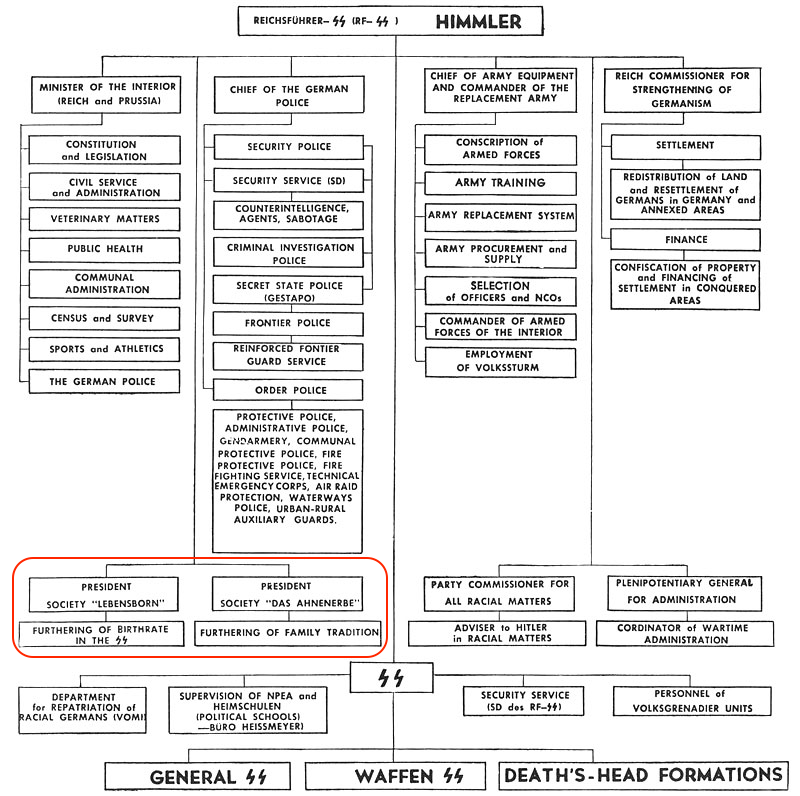

| The Ahnenerbe
(German: [ˈaːnənˌʔɛʁbə], "Ancestral Heritage") was a Schutzstaffel (SS)
pseudoscientific organization which was active in Nazi Germany between
1935 and 1945. It was established by Reichsführer-SS Heinrich Himmler
in July 1935 as an SS appendage devoted to the task of promoting the
racial doctrines espoused by Adolf Hitler and the Nazi Party. The
Ahnenerbe was composed of scholars and scientists from a broad range of
academic disciplines and fostered the idea that the Germans descended
from an Aryan race which was racially superior to other racial groups. Hitler became Chancellor of Germany in 1933, and transformed the country into a one-party state governed as a dictatorship under the control of the Nazi Party. He espoused the idea that the German people were descended from the Aryan race which, Hitler claimed in contrast to established academic understandings, had invented most major developments in human history, such as agriculture, art, and writing. The majority of the world's scholarly community did not accept this, and the Nazis established the Ahnenerbe in order to provide evidence for Nazi racial theories and to promote these ideas to the German public. Ahnenerbe scholars interpreted evidence to fit Hitler's beliefs, and some consciously fabricated evidence in order to do so. The organisation sent expeditions to other parts of the world, intent on finding evidence of historical Aryan expansion. The government of Nazi Germany used the organization's research to justify many of their policies, including the Holocaust. Nazi propaganda also cited Ahnenerbe claims that archaeological evidence indicated that the Aryan race had historically resided in eastern Europe to justify German expansion into the region. In 1937, the Ahnenerbe became an official branch of the SS and was renamed the "Research and Teaching Community in Ancestral Heritage" (Forschungs und Lehrgemeinschaft das Ahnenerbe). Many of their investigations were placed on hold after the outbreak of World War II in 1939, though they continued to carry out new research in areas under German occupation after Operation Barbarossa was launched in 1941. Towards the end of World War II in Europe, Ahnenerbe members destroyed much of the organisation's paperwork to avoid being incriminated in forthcoming war crimes trials. Numerous members escaped Allied denazification policies and remained active in West Germany's archaeological establishment in the postwar era. This stifled scholarly research into the Ahnenerbe, which only intensified after German reunification in 1990. Ideas promoted by the Ahnenerbe have retained an appeal for some neo-Nazi and far-right circles and have also influenced later pseudoarchaeologists. |
アー
ネンナーベ・アーネンエアベ・アーネンエルベ(ドイツ語:
[ˈaːnənˌbə]、「祖先の遺産」)は、1935年から1945年にかけてナチス・ドイツで活動した親衛隊(SS)の疑似科学組織である。1935
年7月、ハインリッヒ・ヒムラー親衛隊大総統によって、アドルフ・ヒトラーとナチ党が信奉する人種的教義を推進する任務に専念する親衛隊の付属組織として
設立された。アーネンナーベは幅広い学問分野の学者や科学者で構成され、ドイツ人はアーリア人の子孫であり、他の人種集団よりも人種的に優れているという
考えを助長した。 ヒトラーは1933年にドイツの首相に就任し、ナチ党の支配下でドイツを一党独裁国家に変えた。ヒトラーは、ドイツ人はアーリア人種の末裔であり、アーリ ア人種は農業、芸術、文字など人類史上の主要な発展のほとんどを発明したと主張した。世界の学界の大多数はこれを受け入れず、ナチスはアーネンナーベを設 立し、ナチスの人種理論の証拠を提供し、ドイツ国民にこれらの考えを広めた。アーネンナーベの学者たちは、ヒトラーの信念に合うように証拠を解釈し、その ために意識的に証拠を捏造する者もいた。アーネンナーベは世界各地に探検隊を派遣し、アーリア人の歴史的拡大の証拠を見つけようとした。 ナチス・ドイツ政府は、ホロコーストを含む多くの政策を正当化するために、この組織の調査を利用した。ナチスのプロパガンダも、アーリア人が歴史的に東 ヨーロッパに住んでいたことを考古学的証拠が示しているというアーネンナーベの主張を引用し、ドイツの東ヨーロッパへの進出を正当化した。1937年、 アーネンナーベはSSの正式な支部となり、「祖先の遺産の研究・教育共同体」(Forschungs und Lehrgemeinschaft das Ahnenerbe)と改名された。1939年の第二次世界大戦勃発後、彼らの研究の多くは中断されたが、1941年にバルバロッサ作戦が開始された後 も、ドイツ占領下の地域で新たな研究が続けられた。 ヨーロッパでの第二次世界大戦が終わる頃、アーネンナーベのメンバーは、間近に迫った戦争犯罪裁判で罪に問われるのを避けるため、組織の書類の多くを破棄 した。数多くのメンバーは連合国の非ナチ化政策から逃れ、戦後も西ドイツの考古学団体で活動を続けた。このため、アーネンナーベに関する学術的研究は抑制 され、1990年のドイツ再統一後、その傾向はさらに強まった。アーネンナーベが推し進めた思想は、一部のネオナチや極右サークルにとって魅力的であり続 け、後の似非考古学者たちにも影響を与えた。 |
Background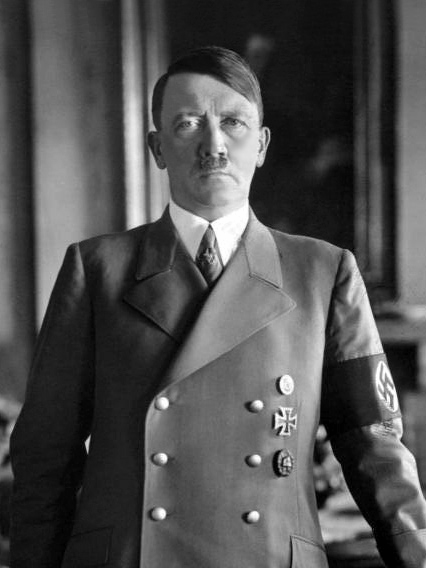 Adolf Hitler, whose racial beliefs inspired research carried out by the Ahnenerbe Adolf Hitler believed that one could divide humanity into three groups: "the founders of culture, the bearers of culture, the destroyers of culture".[1] The founders of culture, in Hitler's view, were a biologically distinct Aryan race who (he believed) had been tall, blond, and originating in Northern Europe. He believed that in prehistory, the Aryan race had been responsible for all significant developments in human culture, including agriculture, architecture, music, literature, and the visual arts.[2] He believed that most modern Germans were the descendants of these Aryans and had genetically inherited the Aryans' biological superiority to other races.[3] The destroyers of culture, in Hitler's view, were the Jews, whom he regarded not as a genetically diverse population sharing certain ethno-cultural and religious traits—as they were then widely recognized—but as a unified, biologically distinct race. He believed that wherever Jews went, they damaged and ultimately destroyed the cultures surrounding them.[3] Hitler had promoted his ideas about the greatness of Germany's ancestors in his 1925 book, Mein Kampf.[4] Outside Germany, most scholars and scientists regarded Hitler's ideas about human evolution and prehistory as nonsense, in part due to the absence of any evidence that North European communities had ever originated major developments in prehistory, such as the development of agriculture and writing, all of which first appeared in the Near East and in Asia.[3] In January 1929 Hitler appointed Nazi Party member Heinrich Himmler to head the Schutzstaffel (SS), a paramilitary group founded in 1925 to serve as personal bodyguards to Hitler and other Nazis.[5] Himmler set out to re-organise the SS, introducing a better system of organisation, and gathering intelligence on prominent Jews and Freemasons, as well as on rival political groups.[6] In 1929, Himmler launched an SS recruitment campaign,[7] and by the end of 1931 the group had 10,000 members.[8] Himmler aimed to ensure that this membership was as racially Nordic as possible, establishing the SS Race and Settlement Main Office (RuSHA) to screen both applicants and the women whom SS members proposed to marry.[9] In believing in the existence of a "Nordic" racial type which was the purest survival of the ancient Aryans, Himmler was influenced by the Nordicist ideas of Hans F. K. Günther (1891–1968), which had been popular in German nationalist circles over the preceding decades.[10] Himmler had an abiding interest in the past, and in how it could provide a blueprint for the future.[11] However, his views of the ancient Germanic peoples differed from Hitler's in certain areas. Hitler was perplexed as to why ancient societies in southern Europe had developed more advanced technology and architecture than their contemporaries in northern Europe. Hitler stated that "People make a tremendous fuss about the excavations carried out in districts inhabited by our forebears of the pre-Christian era. I am afraid that I cannot share their enthusiasm, for I cannot help remembering that, while our ancestors were making these vessels out of stone and clay, over which our archaeologists rave, the Greeks had already built the Acropolis."[12] Hitler explained this by claiming that the Aryans must also have inhabited the south of the continent and that they were responsible for establishing the societies of ancient Greece and Rome. Specifically, he believed that it was the warmer climates of the south that enabled these Aryans to develop in ways that those living further north, in colder and wetter climates, did not.[13] Himmler was aware of these views but, unlike Hitler, admired what he believed was the fierceness and valour of the Germanic tribes of northern Europe.[14] He was particularly interested in Tacitus's Germania, an ethnographic and historical account of the Iron-Age Germanic tribes written by the Roman historian at the end of the first century CE.[11] Nazi Party takes power In the 1932 federal election, the Nazis secured 230 seats in the Reichstag, making them the largest single party but without a controlling majority.[15] Six months later, President Paul von Hindenburg invited Hitler to become Chancellor, after which the latter cemented Nazi dominance over the government. In February 1933, Hitler convinced von Hindenburg to issue the Reichstag Fire Decree, legally suspending civil liberties.[15] Himmler, who was newly appointed as the police chief of Munich, ordered the arrests of those he regarded as a threat to the Nazis—including journalists, labour organisers, Jewish community leaders, socialists, and communists—and their incarceration in Dachau concentration camp.[15] Hitler approved of Himmler's tactics and appointed him head of the political police across Germany.[13] 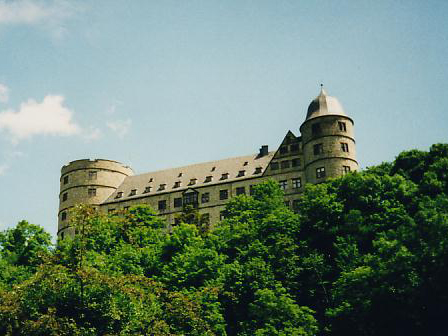 Wewelsburg Castle, which Himmler adopted as an SS base on the advice of the occultist Karl Maria Wiligut In 1933, Himmler initiated plans to establish a "Nordic Academy" to assist the instruction of the SS upper ranks.[16] He was assisted in this by Karl Maria Wiligut, an occultist who was popular in German ultra-nationalist circles.[16] Himmler brought Wiligut into the SS—where he eventually rose to the rank of Brigadeführer—and gave him a private villa in Berlin.[17] Using Wiligut's prophecies as his guide, Himmler selected Wewelsburg castle in Westphalia to serve as a base for many SS operations.[18] The architect Hermann Bartels was employed to oversee renovations to the castle to make it fit for the SS's use.[19] As part of these alterations, one of the rooms in the building became known as "the Grail Room" with a rock crystal representing the Holy Grail being placed in a central position.[19] Himmler also established a private museum at the castle, employing the young archaeologist Wilhelm Jordan to manage it.[19] In 1934, Himmler met the Dutch prehistorian Herman Wirth, who was then living in Germany, at the home of Johann von Leers, a Nazi propagandist.[20] Wirth was one of the most controversial prehistorians in Germany.[21] After examining symbols found in rural Frisian folk art, he became convinced that they represented the survival of an ancient script used by a prehistoric Nordic civilisation. This script, Wirth believed, was the world's oldest written language and had been the basis for all other ancient scripts. Wirth also believed that if he could decipher it, he could then learn the nature of the ancient religion of the Aryan race.[22] This belief conflicted with established scholarly understandings of the past; by the 1930s, scholars were aware that the world's two oldest scripts were those of Mesopotamia and Egypt, and that northern Europe only developed its own form of literacy, that of the runes, under the influence of Etruscan script between 400 BCE to 50 CE. Attempting to explain the lack of any archaeological or historical evidence for an ancient advanced Nordic civilisation, Wirth claimed that the Aryans had evolved in an Arctic homeland two million years ago, before establishing their advanced society on a land in the North Atlantic, which had since sunken into the sea, giving rise to the stories about Atlantis.[23] Wirth's ideas were rejected and ridiculed by the German archaeological establishment, although they had gained the support of several wealthy backers, which assisted him in promoting them.[24] Himmler was among those who liked Wirth's ideas. Himmler was interested in the pre-Christian religions of northern Europe, believing that a modern Pagan religion modelled on them could replace Christianity as the primary religion of the German people.[25] Himmler disliked Christianity because of its Semitic origins, its presentation of Jesus of Nazareth as a Jew, and its advocacy of charity and compassion.[25] Later, Himmler privately told his personal physician that after the Second World War, "the old Germanic gods will be restored".[25] |
背景 アドルフ・ヒトラーは、その人種的信念からアーネンナーベの研究に影響を与えた。 アドルフ・ヒトラーは、人類は3つのグループに分けられると考えていた: 「文化の創始者、文化の担い手、文化の破壊者」[1]である。ヒトラーが考える文化の創始者とは、生物学的に明確なアーリア人種であり、背が高く、金髪 で、北ヨーロッパに起源を持つと信じていた。彼は、先史時代において、アーリア人種が農業、建築、音楽、文学、視覚芸術など、人類の文化におけるすべての 重要な発展を担ってきたと信じていた[2]。彼は、現代のドイツ人のほとんどがこのアーリア人の子孫であり、他の人種に対するアーリア人の生物学的優位性 を遺伝的に受け継いでいると信じていた。 [ヒトラーの考えでは、文化の破壊者はユダヤ人であり、ユダヤ人は当時広く認識されていたように、特定の民族文化的・宗教的特徴を共有する遺伝的に多様な 集団としてではなく、統一された生物学的に異なる人種とみなしていた。彼は、ユダヤ人はどこに行っても、彼らを取り巻く文化に損害を与え、最終的には破壊 すると信じていた[3]。 ヒトラーは1925年の著書『我が闘争』において、ドイツの祖先の偉大さについての彼の考えを宣伝していた[4]。ドイツ国外では、ほとんどの学者や科学 者は人類の進化や先史時代についてのヒトラーの考えをナンセンスなものとみなしていた。 1929年1月、ヒトラーはナチ党員のハインリヒ・ヒムラーを、ヒトラーや他のナチスの個人的な護衛として1925年に創設された準軍事組織である親衛隊 のトップに任命した[5]。 [8] ヒムラーはこの隊員が人種的に可能な限り北欧系であることを保証することを目的とし、SS人種・定住本部(RuSHA)を設立して、志願者とSS隊員が結 婚を申し込む女性の両方を審査した[9]。古代アーリア人の最も純粋な生き残りである「北欧系」人種タイプの存在を信じていたヒムラーは、それ以前の数十 年間ドイツの民族主義界で人気を博していたハンス・F・K・ギュンター(1891-1968)の北欧主義思想に影響を受けていた[10]。 ヒムラーは過去に強い関心を抱いており、過去がどのように未来への青写真となりうるかに関心を抱いていた[11]。しかし、古代ゲルマン民族に対する彼の 見解は、ある部分においてヒトラーとは異なっていた。ヒトラーは、なぜ南ヨーロッパの古代社会が北ヨーロッパの同時代の社会よりも高度な技術や建築を発展 させたのかに当惑していた。ヒトラーは次のように述べている。「人々は、キリスト教以前の時代に我々の先祖が住んでいた地域で行われた発掘調査について、 とてつもない大騒ぎをしている。というのも、われわれの祖先が考古学者たちが絶賛するような石や粘土で器を作っている間に、ギリシア人はすでにアクロポリ スを建設していたからである。具体的には、アーリア人が寒冷で湿潤な気候の北に住む人々にはない発展を遂げることができたのは、南の温暖な気候のおかげだ と考えていた[13]。ヒムラーはこうした見解に気づいていたが、ヒトラーとは異なり、北ヨーロッパのゲルマン民族の獰猛さと武勇を賞賛していた。 [特に、紀元1世紀末にローマの歴史家によって書かれた鉄器時代のゲルマン民族の民族誌的・歴史的記述であるタキトゥスの『ゲルマニア』に関心を寄せてい た[11]。 ナチ党が政権を握る 1932年の連邦選挙でナチスは230議席を獲得し、単独で最大政党となったが、過半数を制することはできなかった[15]。その半年後、パウル・フォ ン・ヒンデンブルク大統領はヒトラーを首相に招聘し、ヒトラーはナチスの政権支配を確固たるものにした。1933年2月、ヒトラーはフォン・ヒンデンブル クを説得し、市民の自由を法的に停止する「帝国議会火災令」を発布させた[15]。新たにミュンヘンの警察署長に任命されたヒムラーは、ジャーナリスト、 労働運動家、ユダヤ人コミュニティの指導者、社会主義者、共産主義者など、ナチスにとって脅威とみなされる人物の逮捕とダッハウ強制収容所への収容を命じ た[15]。ヒトラーはヒムラーの戦術を承認し、彼をドイツ全土の政治警察のトップに任命した[13]。  ヒムラーがオカルト研究家カール・マリア・ヴィリグートの助言でSSの拠点として採用したヴェヴェルスブルク城 1933年、ヒムラーは親衛隊上層部の教育を支援するために「北欧アカデミー」を設立する計画を開始した[16]。これを支援したのは、ドイツの超国家主 義界隈で人気のあったオカルティスト、カール・マリア・ヴィリグートであった[16]。 [18] 建築家ヘルマン・バルテルスは、SSの使用に適した城にするための改築を監督するために雇われた[19]。これらの改築の一環として、建物の一室は「聖杯 の間」として知られるようになり、聖杯を象徴する岩の結晶が中央の位置に置かれた[19]。ヒムラーはまた、城に私設博物館を設立し、若い考古学者ヴィル ヘルム・ヨルダンをその管理に雇った[19]。 1934年、ヒムラーは当時ドイツに住んでいたオランダの先史学者ヘルマン・ヴィルトとナチスの宣伝マンであったヨハン・フォン・リースの家で出会った [20]。ヴィルトは、この文字こそが世界最古の文字であり、他のすべての古代文字の基礎になっていると考えた。1930年代までに学者たちは、世界最古 の文字はメソポタミアとエジプトのものであり、北ヨーロッパは紀元前400年から紀元後50年の間にエトルリア文字の影響を受けてルーン文字という独自の 識字様式を発達させたに過ぎないと認識していた。ヴィルトは、古代の高度な北欧文明の考古学的・歴史的証拠がないことを説明しようとして、アーリア人は 200万年前に北極圏の故郷で進化し、その後北大西洋の陸地に高度な社会を築いたと主張した。 ヴィルトの考えは、ドイツの考古学の権威からは否定され、嘲笑されたが、裕福な後援者数人の支持を得ており、ヴィルトの考えを広めるのに役立っていた [24]。ヒムラーもヴィルトの考えを好んだ一人であった。ヒムラーは北ヨーロッパのキリスト教以前の宗教に興味を持ち、それらをモデルにした近代的な異 教の宗教がキリスト教に代わってドイツ国民の主要な宗教になりうると信じていた[25]。 ヒムラーはキリスト教を、そのセム語起源、ナザレのイエスをユダヤ人として紹介していること、慈善と慈悲を提唱していることから嫌っていた[25]。後に ヒムラーは個人的な医師に、第二次世界大戦後には「古いゲルマンの神々が復活するだろう」と語っている[25]。 |
| History Formation 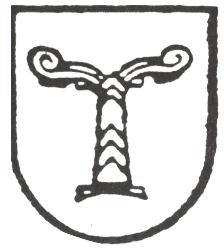 Ahnenerbe Irminsul symbol On July 1, 1935, Himmler organised a meeting at the Berlin headquarters of the SS where he discussed his desire to launch a prehistoric research institute.[26] Both Wirth and the agriculturalist Richard Walther Darré were present, and both responded with enthusiasm to the idea.[26] The group was launched as a department of RuSHA.[27] Wirth became the group's president, while Himmler took the role of superintendent, a position entailing considerable control by placing him in charge of its board of trustees.[27] Its formal goal was "to promote the science of ancient intellectual history".[27] The organisation was initially named the "Deutsches Ahnenerbe Studiengesellschaft für Geistesurgeschichte" (Society for the Study of the History of Primeval Ideas), but this was soon shortened to Ahnenerbe.[27] This was a German term for "something inherited from the forefathers".[28] The Ahnenerbe's first premises were at number 29 and 30 of the Brüderstrasse, a thirteenth-century street in Berlin. These corner buildings were rented from the city's department store magnate Rudolf Herdzog.[29] Initially, it employed seven members of staff.[29] Reflecting Wirth's fixation on the idea of an ancient Aryan script, the organisation's early focus was upon what Wirth called "script and symbol studies".[21] One of its researchers, Yrjö von Grönhagen, was for instance tasked with collecting the Finnish wooden calendars which were engraved with various symbols.[21] Starting in 1934, Himmler began financially supporting and visiting excavations in Germany. This brought him into contact with archaeologists like Alexander Langsdorff [de], Hans Schleif, Werner Buttler [de] and Wilhelm Unverzagt, director of the Staatliches Museum für Vor- und Frühgeschichte in Berlin. Initially, there were two departments within the SS engaged in archaeology: the Abteilung Ausgrabungen of the Persönlicher Stab des Reichsführers der SS and the Abteilung für Vor- und Frühgeschichte at the RuSHA. The latter ("RA IIIB") was established in 1934 and was supposed to serve as a "general staff" for all SS activities related to prehistory. It was responsible for archaeological research and related propaganda and led by Rolf Höhne, a geologist. Höhne was eventually replaced by Peter Paulsen, an archaeologist, in October 1937. The department did not conduct any excavations itself, but was intended to extend the influence of the SS over other institutions, especially those responsible for education/research and monument preservation. In fact, Langsdorff did this in Himmler's personal staff. The department also tried to make use of pre-history in the training and indoctrination of SS members. When the RuSHA was restructured, the department was dissolved with its responsibilities passing to the Ahnenerbe. The Abteilung Ausgrabung in Himmler's personal staff was established in 1935 on the initiative of Langsdorff. In March 1937, Höhne joined the leadership of this department. By 1937, it was responsible for SS excavations and maintained its own personnel for this activity.[30] The organization's official mission was twofold. Its first purpose was to reveal new evidence for the accomplishments of the ancestors of the modern Germans "using exact scientific methods".[28] Its second purpose was to convey its findings to the German public through magazine articles, books, museum exhibits, and scholarly conferences.[31] According to Pringle, it was however "in the business of myth-making", repeatedly "distorting the truth and churning out carefully tailored evidence to support the racial ideas of Adolf Hitler."[1] Some members of the Ahnenerbe consciously altered their evidence and interpretations to match Hitler's beliefs; others appear to have been unaware of how their adherence to Nazi doctrine was shaping their interpretations.[1] Himmler regarded the Ahnenerbe as an elite think tank which would sweep away previous scholarship on the development of humanity and reveal that Hitler's ideas on the subject were true. Himmler also believed that the group's investigations might reveal ancient secrets about agriculture, medicine, and warfare which would benefit Nazi Germany. It employed scholars from a wide range of academic fields, including archaeology, anthropology, ethnology, folkloristics, runology, Classics, history, musicology, philology, biology, zoology, botany, astronomy, and medicine. Himmler believed that scholars active in all of these different fields would piece together a view of the past that would revolutionise established interpretations; in his words, it would represent "hundreds of thousands of little mosaic stones, which portray the true picture of the origins of the world." On July 1, 1935, at SS headquarters in Berlin, Himmler met with five "racial experts" representing Darré and with Wirth. Together they established an organization called the "German Ancestral Heritage—Society for the Study of the History of Primeval Ideas" (Deutsches Ahnenerbe—Studiengesellschaft für Geistesurgeschichte), shortened to its better-known form in 1937. At the meeting they designated its official goal, “to promote the science of ancient intellectual history,” and appointed Himmler as its superintendent, with Wirth serving as its president. Himmler appointed Wolfram Sievers Generalsekretär (General Secretary) of the Ahnenerbe.[citation needed] 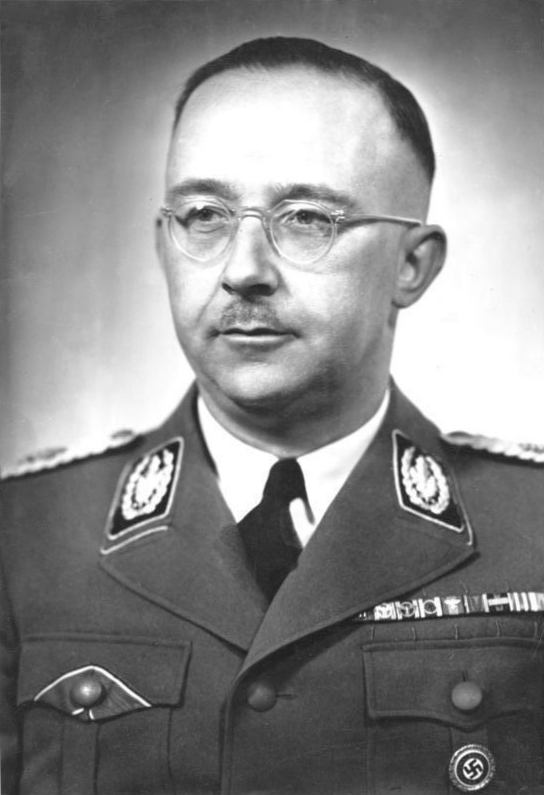 Heinrich Himmler, Reichsführer-SS and founder of the Ahnenerbe Through 1937, the Ahnenerbe was essentially engaged in amateur völkisch research. Financial and academic pressure caused Himmler to start looking for an alternative to Wirth as early as the spring of 1936. In September, Hitler negatively referred to Wirth's beliefs regarding Atlantis and their influence on "Böttcherstrasse architecture" in a speech at the Reichsparteitag.[30] In March 1937, the Ahnenerbe was given a new statute, implementing the Führerprinzip (leader principle) and giving Himmler extensive powers. Wirth was deposed as president and appointed honorary president, a powerless position. Himmler's position as Kurator was given more power.[30] Walther Wüst was appointed the new president of the Ahnenerbe. Wüst was an expert on India and a dean at Ludwig Maximilian University of Munich, working on the side as a Vertrauensmann for the Sicherheitsdienst (SD, Security Service). Referred to as The Orientalist by Wolfram Sievers, Wüst had been recruited by him in May 1936 because of his ability to simplify science for the common man.[32] After being appointed president, Wüst began improving the Ahnenerbe, moving the offices to a new headquarters that cost 300,000 ℛ︁ℳ︁ in the Dahlem neighborhood of Berlin. He also worked to limit the influence of “those he deemed scholarly upstarts,” which included cutting communication with the RuSHA office of Karl Maria Wiligut.[32] The Generalsekretariat led by Sievers was turned into the institution's Reichsgeschäftsführung. The Ahnenerbe was renamed Forschungs- und Lehrgemeinschaft Das Ahnenerbe e.V.. It was moved from the RuSHA to Himmlers's personal staff.[30][33] Wirth and Wilhelm Teudt lost their departments in Ahnenerbe in 1938. In 1939, the statutes were changed again and Wirth was deposed as honorary president. Himmler's and Wüsts' titles were switched with Himmler now the president. Next to Wüst, the academic with most influence in the institution after 1939 was Herbert Jankuhn, who in 1937 still had categorically rejected cooperation with the "unscientific" Ahnenerbe.[30] Ahnenerbe was a mix between an SS department and an Eingetragener Verein. Membership was open to all natural and legal persons. Its staff were SS members, many also working in other SS positions, and thus subject to SS jurisdiction.[30] In late 1936, Ahnenerbe took over the publication of Teudt's magazine Germanien, first in cooperation with Teudt, then without him. The monthly now became the official voice of Ahnenerbe and was aimed at a wider audience. From December 1936, the magazine was distributed free of charge to all SS leaders.[30] Cooperation with other SS departments was initially limited, but improved after 1937. Contacts with the SD-HA and the editorial team of the SS weekly Das schwarze Korps intensified. Ahnenerbe eventually had the scientific responsibility for the SS-Leithefte and in conjunction with the SS-HA, Ahnenerbe established Germanische Leitstelle and Germanischer Wissenschaftseinsatz.[30] In 1939, the Ahnenerbe held its first independent annual convention, at Kiel. The event's success contributed to the trend that archaeologists were increasingly turning to the Ahnenerbe and away from Alfred Rosenberg's rival Reichsbund für Deutsche Vorgeschichte [de].[30] In fiscal year 1938–1939, the budget for the excavations department was 65,000 ℛ︁ℳ︁, about 12% of the Ahnenerbe's total budget. More than a third of that went to the Haithabu activities. Under Jankuhn's direction four more archaeological departments were set up: in April 1938 the Forschungsstätte für naturwissenschaftliche Vorgeschichte (a laboratory for analyzing pollen) was established at Dahlem under the leadership of Rudolf Schütrumpf [de]. The Forschungsstätte für Wurtenforschung at Wilhelmshaven led by Werner Haarnagel [de], the Forschungsstätte für germanisches Bauwesen led by Martin Rudolph and the Forschungsstätte für Urgeschichte directed by Assien Bohmers [de] followed in 1939.[30] As a gift for Hitler's fiftieth birthday, among the presents which Himmler procured for him was a set of leather bound books, one of which was on the subject of the Ahnenerbe's research.[28] The Ahnenerbe sought to cultivate an air of professional integrity.[34] The Ahnenerbe became an integral part of the SS.[1] By 1939, the Ahnenerbe employed 137 scholars and scientists, as well as 82 support workers, including artists, photographers, laboratory technicians, librarians, accountants, and secretaries.[1] The Holocaust Himmler used the Ahnenerbe's research to fuel and justify the Holocaust.[35] In a 1937 speech at Bad Tölz, Himmler announced that the bog bodies of northwestern Europe, which testified to an Iron Age tradition in which individuals were deliberately killed and deposited in bogs, must have represented the eradication of homosexuals.[36] This was an idea that he had adopted from Ahnenerbe archaeologist Herbert Jankuhn.[37] His adoption of this suggestion was linked to his homophobic fear that male homosexuality was transmittable and that it could spread within the ranks of the SS and other spaces of male bonding unless strong measures were implemented to prevent it.[38] Himmler then claimed this alleged ancient tradition as legitimation for the extermination of homosexuals within his own society.[37] As many as 15,000 gay men were rounded up and imprisoned in concentration camps, where up to 60 percent died.[37] Second World War Amid the German invasion of Poland in 1939, the Ahnenerbe sent a team into Warsaw to remove any items from its museums which they believed to be German in origin.[34] In 1939, the Ahnenerbe's further four planned expeditions—to Iran, the Canary Islands, the Andes, and Iceland—were indefinitely postponed.[39] At the end of the war in Europe, members of the Ahnenerbe destroyed much of the organisation's paperwork lest it incriminate them during future war crime tribunals.[40] Institutes Main article: List of Ahnenerbe institutes The Ahnenerbe had several different institutes or sections for its departments of research. Most of these were archeological but others included the Pflegestätte für Wetterkunde (Meteorology Section) headed by Obersturmführer Dr Hans Robert Scultetus, founded on the basis that Hanns Hörbiger's Welteislehre could be used to provide accurate long-range weather forecasts,[41] and a section devoted to musicology, whose aim was to determine "the essence" of German music. It recorded folk music on expeditions to Finland and the Faroe Islands, from ethnic Germans of the occupied territories, and in South Tyrol. The section made sound recordings, transcribed manuscripts and songbooks, and photographed and filmed instrument use and folk dances. The lur, a Bronze Age musical instrument, became central to this research, which concluded that Germanic consonance was in direct conflict to Jewish atonalism. |
沿革 フォーメーション  アーネナーベ・イルミンスルのシンボルマーク 1935年7月1日、ヒムラーはベルリンの親衛隊本部で会議を開き、先史時代の研究所を立ち上げたいと話し合った[26]。ヴィルトと農学者のリヒャル ト・ワルター・ダレが出席し、両者ともこのアイデアに熱意をもって応じた[26]。 [26]グループはRuSHAの一部門として発足した[27]。ヴィルトはグループの会長に就任し、ヒムラーは評議員会の責任者としてかなりの統制を伴う 監督者の役割を担った[27]。正式な目標は「古代の知的歴史の科学を促進する」ことであった[27]。 この組織は当初「Deutsches Ahnenerbe Studiengesellschaft für Geistesurgeschichte」(原始思想史研究協会)と名付けられたが、すぐに「Ahnenerbe」と短縮された[27]。これらの角の建 物は、ベルリンの百貨店王ルドルフ・ヘルツォークから借りたものであった[29]。当初は7人のスタッフを雇用していた[29]。古代のアーリア文字とい う考え方に固執していたヴィルトを反映して、この組織の初期の焦点はヴィルトが「文字とシンボルの研究」と呼ぶものであった[21]。研究者の一人であっ たユリョ・フォン・グレンハーゲンは、例えば、様々なシンボルが刻まれたフィンランドの木製カレンダーの収集を任されていた[21]。 1934年から、ヒムラーはドイツ国内の発掘調査を財政的に支援し、訪問するようになった。これによって彼は、アレクサンダー・ラングスドルフ (Alexander Langsdorff [de] )、ハンス・シュライフ(Hans Schleif)、ヴェルナー・バトラー(Werner Buttler [de] )、そしてベルリンの国立古文書博物館の館長であったヴィルヘルム・ウンヴェルザクト(Wilhelm Unverzagt)といった考古学者と接触することになった。当初、親衛隊には考古学に携わる部署が2つあった。すなわち、親衛隊ペルソングラフンゲン のAusgrabungen部門と、RuSHAのVor- und Frühgeschichte部門である。後者(「RA IIIB」)は1934年に設立され、先史学に関連するSS活動全般の「参謀」として機能することになっていた。考古学研究と関連プロパガンダを担当し、 地質学者ロルフ・ヘーネが率いていた。ヘーネは1937年10月、考古学者ペーター・ポールセンに交代した。この部門は発掘自体は行わなかったが、SSの 影響力を他の機関、特に教育・研究や記念碑の保存を担当する機関にまで拡大することを目的としていた。実際、ラングスドルフはヒムラーの個人スタッフとし てこれを行った。同部門はまた、SS隊員の訓練や教化に前史を利用しようとした。RuSHAが再編されたとき、この部門は解体され、その責任はアーネン ナーベに引き継がれた。1935年、ラングスドルフの発案で、ヒムラー個人スタッフの中にアウストラブング部門が設立された。1937年3月、ヘーネがこ の部門の指導者に加わった。1937年までには、SSの発掘を担当し、この活動のために独自の人員を維持していた[30]。 この組織の公式な任務は2つあった。その第一の目的は、「正確な科学的方法を用いて」現代ドイツ人の祖先の業績に関する新たな証拠を明らかにすることで あった[28]。その第二の目的は、雑誌記事、書籍、博物館の展示、学術会議を通じてドイツ国民にその発見を伝えることであった。 [プリングルによれば、アーネンナーベはしかし「神話を作ること」を事業としており、「真実を歪曲し、アドルフ・ヒトラーの人種的思想を支持するために慎 重に調整された証拠を作り上げる」ことを繰り返していた[1]。 ヒムラーは、アーネンナーベを、人類の発展に関するこれまでの学問を一掃し、このテーマに関するヒトラーの考えが真実であることを明らかにするエリート・ シンクタンクとみなしていた。ヒムラーはまた、このグループの調査によって農業、医学、戦争に関する古代の秘密が明らかになり、それがナチス・ドイツに利 益をもたらすと考えていた。考古学、人類学、民族学、民俗学、ルノロジー、古典学、歴史学、音楽学、言語学、生物学、動物学、植物学、天文学、医学など、 幅広い学問分野の学者を起用した。ヒムラーは、これらすべての異なる分野で活躍する学者たちが、既成の解釈を一変させるような過去の見解をまとめ上げると 信じていた。彼の言葉を借りれば、それは「何十万もの小さなモザイクの石ころであり、世界の起源の真の姿を描いている」のである。 1935年7月1日、ベルリンのSS本部で、ヒムラーはダレを代表する5人の「人種専門家」とヴィルトに会った。彼らは一緒に「ドイツ祖先遺産-原始思想 史研究協会」(Deutsches Ahnenerbe-Studiengesellschaft für Geistesurgeschichte)と呼ばれる組織を設立した。この会議では、「古代の知的歴史の科学を促進する」という公式目標を定め、ヒムラー を監督官に任命し、ヴィルトを会長に任命した。ヒムラーはヴォルフラム・シーヴァースをアーネンナーベの書記長に任命した[要出典]。  ハインリヒ・ヒムラー、帝国親衛隊総統、アーネンナーベ創設者 1937年まで、アーネンナーベは基本的にアマチュアのヴォルキッシュ研究に従事していた。経済的、学術的な圧力により、ヒムラーは1936年春には早く もヴィルトに代わる研究者を探し始めた。9月、ヒトラーは帝国州議会での演説で、アトランティスに関するヴィルトの信念と「ベッチャーシュトラーセ建築」 への影響について否定的に言及した[30]。 1937年3月、アーネンナーベは新しい規約を与えられ、フューラープリンツィップ(指導者原理)を実施し、ヒムラーに広範な権限を与えた。ヴィルトは会 長を解任され、名誉会長に任命された。ヒムラーのクラーターとしての地位はより大きな権力を与えられた[30]。 ヴァルター・ヴュストがアーネンナーベの新会長に任命された。ヴュストはインドの専門家であり、ミュンヘンのルートヴィヒ・マクシミリアン大学の学部長で あった。ヴォルフラム・シーヴァースによって東洋学者と呼ばれたヴュストは、科学を庶民向けに単純化する能力を買われ、1936年5月にシーヴァースにス カウトされた[32]。会長に任命されると、ヴュストはアーネンナーベの改善に着手し、事務所をベルリンのダーレム地区にある30万㌆をかけた新本部に移 した。彼はまた、カール・マリア・ヴィリグートのRuSHA事務所との連絡を絶つなど、「学者上がりの連中と見なした連中」の影響力を制限することにも努 めた[32]。 シーヴァースが率いる総局は、この機関のライヒスゲシェフトフュルングとなった。アーネンナーベはForschungs- und Lehrgemeinschaft Das Ahnenerbe e.V.と改称された。それはRuSHAからヒムラーツの個人スタッフに移された[30][33]。 ヴィルトとヴィルヘルム・トイトは1938年にアーネンナーベの部門を失った。1939年、規約が再び変更され、ヴィルトは名誉会長を解任された。ヒム ラーとヴュストの肩書は入れ替わり、ヒムラーが会長となった。1939年以降、ヴュストの次に組織内で影響力を持った学者はヘルベルト・ヤンクーンで、彼 は1937年の時点ではまだ「非科学的」なアーネンナーベとの協力を断固として拒否していた[30]。 アーネンナーベはSS部門とEingetragener Vereinの中間のようなものであった。会員はすべての自然人および法人に開かれていた。その職員は親衛隊員であり、その多くは他の親衛隊の役職にも就 いていたため、親衛隊の管轄下にあった[30]。 1936年末、アーネンナーベは、最初はトイトと協力し、その後トイト抜きで、トイトの雑誌『ゲルマニアン』の発行を引き継いだ。この月刊誌はアーネン ナーベの公式の代弁者となり、より多くの読者を対象とするようになった。1936年12月から、この雑誌はすべてのSS指導者に無料で配布された [30]。 他のSS部門との協力は当初は限定的であったが、1937年以降は改善された。SD-HAやSS週刊誌『Das schwarze korps』の編集チームとの接触が強化された。アーネンナーベは最終的にSS-Leithefteの科学的責任を負い、SS-HAと共同で Germanische LeitstelleとGermanischer Wissenschaftseinsatzを設立した[30]。 1939年、アーネンナーベは初の独立した年次大会をキールで開催した。この大会の成功は、考古学者がますますアーネンナーベに傾倒し、アルフレッド・ ローゼンベルクのライバルであったReichsbund für Deutsche Vorgeschichte [de]から離れていく傾向に貢献した[30]。 1938-1939年度の発掘部門の予算は65,000︫︁で、アーネンナーベの総予算の約12%であった。その3分の1以上がハイタブの活動に使われ た。ヤンクーンの指揮の下、さらに4つの考古学部門が設立された。1938年4月、ルドルフ・シュトルンプフ[de]の指揮の下、ダーレムに花粉分析研究 所が設立された。1939年には、ヴェルナー・ハールナーゲル[訳注]が率いるヴィルヘルムスハーフェンの建築学研究所、マルティン・ルドルフが率いるド イツ建築学研究所、アシエン・ボーマース[訳注]が率いる都市史研究所が続いた[30]。 ヒトラーの50歳の誕生日のプレゼントとして、ヒムラーがヒトラーのために調達したプレゼントの中に革装丁の書籍一式があり、そのうちの一冊がアーネン ナーベの研究テーマに関するものであった[28]。 1939年までに、アーネンナーベは137人の学者と科学者を雇用し、芸術家、写真家、実験技師、司書、会計士、秘書など82人の支援者を雇用した [1]。 ホロコースト ヒムラーはアーネンナーベの研究をホロコーストを煽り、正当化するために利用した[35]。 1937年、バート・テルツでの演説で、ヒムラーは、個人が意図的に殺され、沼地に埋められた鉄器時代の伝統を証言する北西ヨーロッパの沼地の死体は、同 性愛者の根絶を意味するに違いないと発表した[36]。 [37]彼がこの提案を採用したのは、男性の同性愛は伝染性があり、それを防ぐための強力な対策が実施されない限り、SSの隊列や他の男性同士の結びつき の空間の中で広まる可能性があるという彼の同性愛嫌悪的な恐怖と関連していた[38]。ヒムラーはその後、この古くからの伝統とされるものを、自らの社会 における同性愛者の絶滅の正当化として主張した[37]。 第二次世界大戦 1939年にドイツがポーランドに侵攻する中、アーネンナーベはワルシャワにチームを派遣し、博物館からドイツ由来と思われる物品を撤去させた[34]。 1939年、アーネンナーベはイラン、カナリア諸島、アンデス、アイスランドへのさらに4つの遠征を計画していたが、無期限に延期された[39]。 ヨーロッパでの戦争が終わると、アーネンナーベのメンバーは、将来の戦争犯罪法廷において自分たちの罪に問われないよう、組織の書類の多くを破棄した [40]。 研究所 主な記事 アーネンナーベの研究所のリスト アーネンナーベにはいくつかの研究所や研究部門があった。そのほとんどは考古学的なものであったが、ハンス・ロベルト・スクルテトゥス親衛隊大将が率いる 気象学部門(Pflegestätte für Wetterkunde)も含まれていた。気象学部門は、ハンス・ヘルビガーのWelteislehreが正確な長距離天気予報に使用できるという根拠に 基づいて設立された[41]。このセクションは、フィンランドやフェロー諸島、占領地のドイツ民族、南チロルへの遠征で民族音楽を録音した。このセクショ ンは録音を行い、手稿や曲集を書き写し、楽器の使い方や民族舞踊を写真に撮ったり撮影したりした。青銅器時代の楽器であるルールがこの研究の中心となり、 ゲルマン人の協和音はユダヤ人の無調性と真っ向から対立していると結論づけた。 |
| Expeditions Karelia In 1935, Himmler contacted a Finnish nobleman and author, Yrjö von Grönhagen, after seeing one of his articles about the Kalevala folklore in a Frankfurt newspaper. Grönhagen agreed to lead an expedition through the Karelia region of Finland to record pagan sorcerers and witches. Because there was uncertainty about whether the Karelians would allow photography, the Finnish illustrator Ola Forsell also accompanied the team. Musicologist Fritz Bose [de] brought along a magnetophon, hoping to record pagan chants. The team departed on their expedition in June 1936. Their first success was with a traditional singer, Timo Lipitsä [fi], who knew a song closely resembling one in the Kalevala although he was unaware of the book. Later, in Tolvajärvi, the team photographed and recorded Hannes Vornanen playing a traditional Finnish kantele. One of the team's final successes was in finding Miron-Aku, a soothsayer believed to be a witch by locals.[42] Upon meeting the group, she claimed to have foreseen their arrival. The team persuaded her to perform a ritual for the camera and tape recorder in which she summoned the spirits of ancestors[43] and "divine[d] future events." The team also recorded information on Finnish saunas. Bohuslän 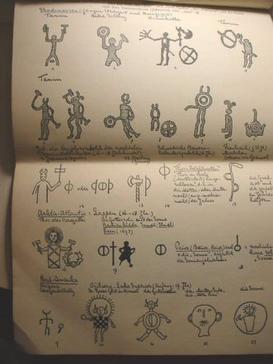 Scan from Ahnenerbe co-founder Herman Wirth's 1931 book Was heißt deutsch? After a slide show on February 19, 1936 of his trip to Bohuslän, a region in southwestern Sweden, Wirth convinced Himmler to launch an expedition to the region, the first official expedition financed by the Ahnenerbe. Bohuslän was known for its massive quantity of petroglyph rock carvings, which Wirth believed were evidence of an ancient writing system predating all known systems. Himmler appointed Wolfram Sievers to be the managing director of the expedition, likely because of Wirth's earlier troubles balancing finances.[32][page needed] On August 4, 1936, the expedition set off on a three-month trip, starting at the German island of Rügen, then continuing to Backa, the first recorded rock-art site in Sweden. Despite the existence of scenes showing warriors, animals and ships, Wirth focused on the lines and circles that he thought made up a prehistoric alphabet. While his studies were largely based on personal belief, rather than objective scientific research, Wirth made interpretations of the meanings of ideograms carved in the rock, such as a circle bisected by a vertical line representing a year and a man standing with raised arms representing what Wirth called "the Son of God."[32][page needed] His team proceeded to make casts of what Wirth deemed the most important carvings and then carried the casts to camp, where they were crated and sent back to Germany. Once satisfied with their work at the site, the team set out on a trek through Sweden, eventually reaching the Norwegian island of Lauvøylandet. Italy 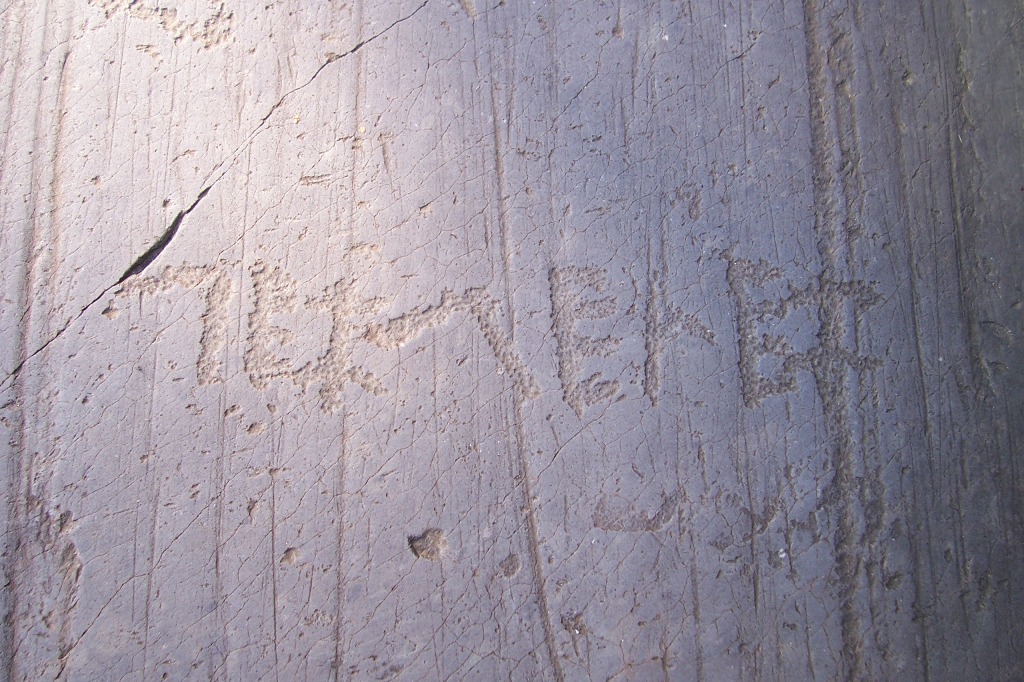 Camunic runes in Val Camonica In 1937, the Ahnenerbe sent the archaeologist Franz Altheim and his wife, the photographer Erika Trautmann, to Val Camonica, to study prehistoric rock inscriptions. The two returned to Germany claiming that they had found traces of Nordic runes on the rocks, supposedly confirming that ancient Rome was founded by Nordic incomers. Also, an expedition to Sardinia was planned in the 1930s, but the reasons for it still remain unknown.[44] Central Eurasia In 1938, Franz Altheim and his research partner Erika Trautmann requested the Ahnenerbe sponsor their expedition from Central Europe through Western Asia to study an internal power struggle of the Roman Empire, which they believed was fought between the Nordic and Semitic peoples. Eager to credit the vast success of the Roman Empire to people of a Nordic background, the Ahnenerbe agreed to match the 4,000 ℛ︁ℳ︁ put forward by Hermann Göring, an old friend of Trautmann's.[32][page needed] In August 1938, after spending a few days traveling through remote hills searching for ruins of Dacian kingdoms, the two researchers arrived at their first major stop in Bucharest, the capital of Romania. There Grigore Florescu, the director of the Municipal Museum, met with them, and discussed both history and the politics of the day, including the activities of the Iron Guard. After traveling through Istanbul, Athens, and Lebanon, the researchers went to Damascus. They were not welcomed by the French, who ruled Syria as a colony at the time. The newly-sovereign Kingdom of Iraq was being courted for an alliance with Germany,[32][page needed] and Fritz Grobba, the German envoy to Baghdad, arranged for Altheim and Trautmann to meet with local researchers and be driven to Parthian and Persian ruins in southern Iraq, as well as Babylon. Through Baghdad, the team went north to Assur where they met Sheikh Adjil el Yawar, a leader of the Shammar Bedouin tribe and commander of the northern Camel Corps. He discussed German politics and his desire to duplicate the success of Abd al-Aziz ibn Saud who had recently ascended to power in Saudi Arabia.[32][page needed] With his support, the team traveled to their final major stop, the ruins of Hatra on the former border between the Roman and Persian empires. New Swabia Main article: German Antarctic Expedition (1938–1939) The third German Antarctic Expedition took place between 1938 and 1939. It was led by Alfred Ritscher (1879–1963). Germany Hedeby Excavations that had been ongoing at Hedeby since 1930 were formally put under the aegis of Ahnenerbe in 1938 by Jankuhn.[45] Baden-Württemberg In 1937–1938, Gustav Riek led an excavation at the Heuneburg on the Danube in Baden-Württemberg, where an ancient fortress had been discovered much earlier. The Ahnenerbe thus won out over Hans Reinerth of the Reichsbund für Deutsche Vorgeschichte [de] who had competed for the excavation. Riek focused on the burial mound known as Hohmichele [de] where he found the main burial chamber to have been plundered in antiquity. In its direct vicinity another grave was discovered, however, that included rich grave furnishings. Due to the outbreak of war in 1939 the excavations were discontinued.[46]: 24–25 [47] A private expedition by Richard Anders and Wiligut into the Murg Valley of northwestern Baden-Württemberg had nothing to do with the Ahnenerbe. Mauern The Ahnenerbe also was active in the Mauerner Höhlen [de] (Mauern caves) in the Franconian Jura. R.R. Schmidt discovered red ochre, a common pigment for cave paintings made by the Cro-Magnon. In autumn 1937, Assien Bohmers [de], a Frisian nationalist who had applied to the SS Excavations Department earlier that year, took over the excavation. His team proceeded to find artifacts such as burins, ivory pendants, and a woolly mammoth skeleton. They also discovered Neanderthal remains buried with what appeared to be throwing spears and javelins, a technology thought to have been developed by the Cro-Magnons. Bohmers interpreted this to mean that Cro-Magnons had left these stones in the caves over 70,000 years before, and this was therefore the oldest Cro-Magnon site in the world. To validate his claims, Bohmers traveled around Europe speaking with colleagues and organizing exhibitions, notably in the Netherlands, Belgium and France.[32][page needed] France At the Parisian Institute for Human Paleontology, Bohmers met with Abbé Henri Breuil, an expert on cave art. Breuil arranged for Bohmers to visit Trois Frères, a site whose owners allowed only a small number of visitors.[32][page needed] First, however, Bohmers took a quick trip to London, followed by a tour of several other French points of interest: Font-de-Gaume (a site featuring Cro-Magnon cave paintings), Teyat, La Mouthe and the caves of Dordogne. Then Bohmers moved on to Les Trois-Frères.[32][page needed] Bayeux Tapestry The Ahnenerbe took great interest in the 900-year-old Bayeux Tapestry. In June 1941, its staff oversaw the transport of the tapestry from its home in Bayeux Cathedral to an abbey at Juaye-Mondaye, and finally to the Château de Sourches. In August 1944, after Paris was liberated by the Allies, two members of the SS were dispatched to Paris to retrieve the tapestry, which had been moved into the basement of the Louvre. Contrary to Himmler's orders, however, they chose not to attempt to enter the Louvre, most likely because of the strong presence of the French Resistance in the historic area.[citation needed] Tibet Main article: 1938–1939 German expedition to Tibet 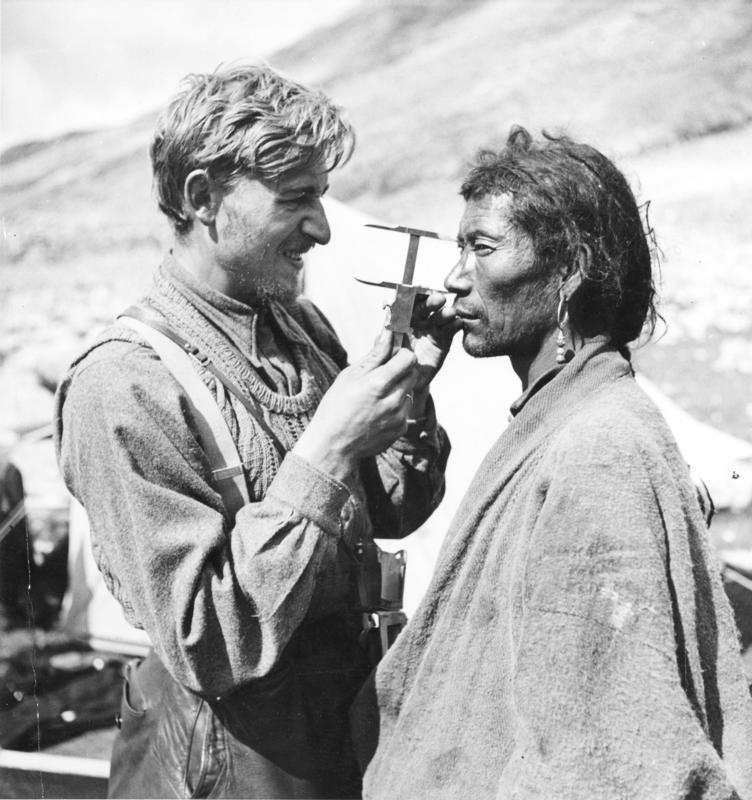 Bruno Beger conducting anthropometric studies in Sikkim In 1937, Himmler decided that he could increase the Ahnenerbe's visibility by investigating Hans F. K. Günther’s claims that early Aryans had conquered much of Asia, including attacks against China and Japan in approximately 2000 BC, and that Gautama Buddha was himself an Aryan offshoot of the Nordic race. Walther Wüst later expanded on this theory, stating in a public speech that Adolf Hitler's ideology corresponded with that of the Buddha, since the two shared a common heritage.[citation needed] However, according to contemporary research Hitler himself was not interested in Buddhism or Tibet.[48] Poland See also: World War II looting of Poland 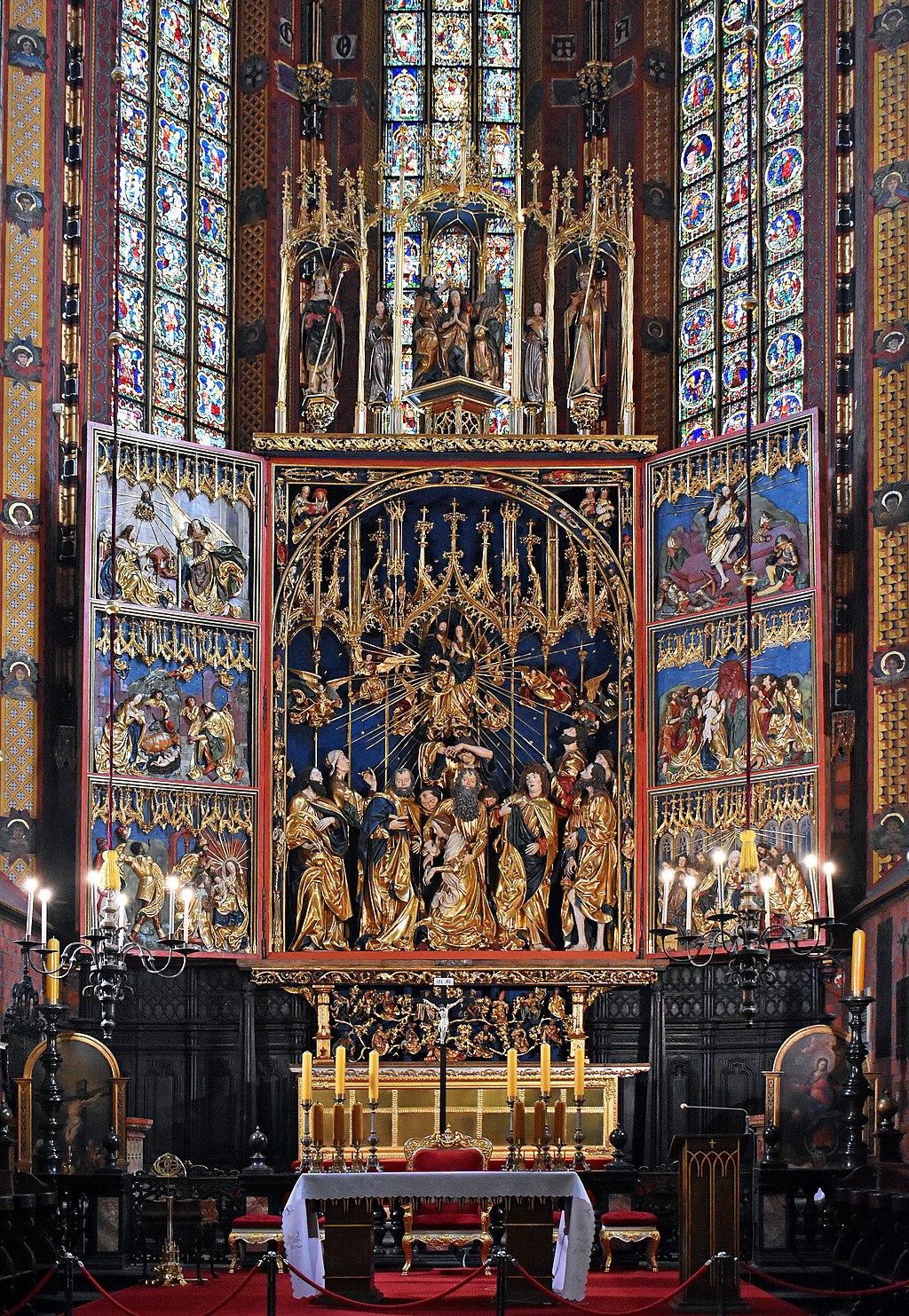 The altar of Veit Stoss After the invasion of Poland in September 1939, Wolfram Sievers wrote to Himmler stressing the need to appropriate exhibits from numerous museums.[49] Reich Security Main Office (RSHA) Standartenführer Franz Six oversaw SS-Untersturmführer Peter Paulsen [de], who was commanding a small team that entered Kraków to obtain the 15th-century Veit Stoss altar. Because the Poles had foreseen the German interest in the altar, they had disassembled it into 32 pieces, which were shipped to different locations, but Paulsen located each piece, and on October 14, 1939, he returned to Berlin with the altar in three small trucks and had it stored in the locked treasury of the Reichsbank.[32][page needed] After conferring with Hitler, who had not initially been told of the operation to capture it, it was decided to send the altar to an underground vault in Nuremberg, for safety. Reinhard Heydrich, then head of RSHA, sent Paulsen back to Kraków in order to seize additional museum collections,[32][page needed] but Göring had already sent a team of his own men, commanded by SS-Sturmbannführer Kajetan Mühlmann under the supervision of Dagobert Frey, to loot the museums. Mühlmann agreed to let Paulsen take items of scholarly interest back to the Ahnenerbe, while keeping artworks for Göring. During the looting, Hans Frank, the head of the German General Government in occupied Poland, issued an order dated November 22, 1939 prohibiting the “unapproved export” of Polish items. Paulsen obeyed the order, but his colleague Hans Schleif arranged for five freightcars of loot from the Warsaw Archaeological Museum[50] to be shipped to Poznań, which was outside Frank's control. In return, Schleif was appointed as a trustee for Wartheland. Paulsen later tried to take credit for the freightcars' contents in his report to RuSHA, but was reassigned.[32][page needed][51] Eduard Paul Tratz of the Ahnenerbe also removed some exhibits from the State Zoological Museum in Warsaw to the Haus der Natur, the museum in Salzburg of which he was founder and director.[52] Crimea After the German Army conquered the Crimea in early July 1942, Himmler sent Herbert Jankuhn, as well as Karl Kersten [de] and Baron Wolf von Seefeld, to the region in search of artifacts to follow up the recent display of the Kerch “Gothic crown of the Crimea” in Berlin. Jankuhn met with senior officers of Einsatzkommando 11, part of Einsatzgruppe D, while waiting at the field headquarters of the 5th SS Panzer Division. Commander Otto Ohlendorf gave Jankuhn information about the Crimean museums.[53] Traveling with the 5th SS Panzer, Jankuhn's team eventually reached Maykop, where they received a message from Sievers that Himmler wanted an investigation of Mangup Kale, an ancient mountain fortress. Jankuhn sent Kersten to follow up on Mangup Kale, while the rest of the team continued trying to secure artifacts that had not already been taken by the Red Army. Einsatzkommando 11b's commander Werner Braune aided the team. Jankuhn was ultimately unable to find Gothic artifacts denoting a German ancestry, even after intelligence about a shipment of 72 crates of artifacts shipped to a medical warehouse. The area had been ravaged by the time the team arrived and only 20 crates remained, but they contained Greek and stone-age artifacts, rather than Gothic.[32][page needed] Ukraine In June 1943, 27-year-old SS-Untersturmführer Heinz Brücher, who held a PhD from Tübingen in botany, was tasked with an expedition to Ukraine and Crimea. SS-Hauptsturmführer Konrad von Rauch and an interpreter identified as Steinbrecher were also involved in the expedition. In February 1945, Brücher was ordered to destroy the Ahnenerbe's 18 active research facilities to avoid their capture by advancing Soviet forces. He refused, and after the war continued his work as a botanist in Argentina and Trinidad.[54] |
探検 カレリア 1935年、ヒムラーはフィンランドの貴族で作家のユリョ・フォン・グレンハーゲンと連絡を取り、フランクフルトの新聞で彼のカレワラ伝承に関する記事を 目にした。グレンハーゲンは、異教の魔術師や魔女を記録するためにフィンランドのカレリア地方を探検することに同意した。カレリア人が写真撮影を許可する かどうか不安だったため、フィンランドのイラストレーター、オラ・フォルセルも同行した。音楽学者のフリッツ・ボース[デ]は、異教徒の聖歌を録音するた めにマグネトフォンを持参した。 チームは1936年6月に探検に出発した。最初の成功は伝統的な歌い手ティモ・リピツァ[fi]で、彼は『カレワラ』を知らなかったが、『カレワラ』に出 てくる歌によく似た歌を知っていた。その後、チームはトルヴァヤルヴィで、伝統的なフィンランドのカンテレを演奏するハンネス・ヴォルナネンを撮影・録音 した。 チームの最後の成功のひとつは、地元の人々に魔女と信じられている予言者ミロン=アクを見つけたことだった[42]。チームは彼女を説得し、カメラとテー プレコーダーの前で先祖の霊を呼び出し[43]、「未来の出来事を占う」儀式を行った。チームはフィンランドのサウナに関する情報も記録した。 ボーフスレン  アーネンナーベ共同創設者ヘルマン・ヴィルトの1931年の著書『Was heißt deutsch? 1936年2月19日、スウェーデン南西部のボーフスレン地方を旅行したスライドショーの後、ヴィルトはヒムラーを説得し、アーネンナーベが資金を提供し た最初の公式遠征隊として、この地方への遠征を開始した。ボーフスレーンは大量のペトログリフの岩刻画で知られ、ヴィルトはそれがあらゆる既知の文字体系 よりも古い古代の文字体系の証拠だと考えた。ヒムラーはヴォルフラム・シーヴァースを探検隊の運営責任者に任命したが、これはヴォルトが以前に財政のバラ ンスを取るのに苦労していたためと思われる[32][要出典]。 1936年8月4日、探検隊は3ヶ月の旅に出発し、ドイツのリューゲン島から出発し、スウェーデンで最初に記録された岩絵遺跡であるバッカに向かった。戦 士、動物、船などが描かれているにもかかわらず、ヴィルトは先史時代のアルファベットと思われる線と円に注目した。彼の研究は、客観的な科学的調査という よりは、むしろ個人的な信念に基づいたものであったが、ヴィルトは岩に刻まれた表意文字の意味を解釈した。例えば、縦線で二等分された円は年を表し、両手 を上げて立っている人物はヴィルトが「神の子」と呼んだものを表している[32][要出典]。現場での作業に満足すると、チームはスウェーデンを縦断し、 最終的にノルウェーのラウヴォイランデット島に到着した。 イタリア  ヴァル・カモニカにあるカムニックのルーン文字 1937年、アーネンナーベは考古学者フランツ・アルタイムとその妻で写真家のエリカ・トラウトマンをヴァル・カモニカに派遣し、先史時代の岩刻文字を調 査させた。二人は、岩の上に北欧のルーン文字の痕跡を発見し、古代ローマが北欧人によって建設されたことを確認したと主張してドイツに戻った。また、 1930年代にはサルデーニャへの探検が計画されたが、その理由はいまだに不明である[44]。 中央ユーラシア 1938年、フランツ・アルトハイムと彼の研究パートナーであるエリカ・トラウトマンは、ローマ帝国の内部権力闘争を研究するため、中央ヨーロッパから西 アジアを通過する遠征のスポンサーをアーネンナーベに要請した。ローマ帝国が大成功を収めたのは北欧系民族のおかげであると考えたアーネンナーベは、トラ ウトマンの旧友であるヘルマン・ゲーリングが提示した4,000人のℳ︁︁と同額にすることに同意した[32][要出典]。 1938年8月、ダキア王国の遺跡を探して人里離れた丘陵地帯を数日間旅した後、2人の研究者はルーマニアの首都ブカレストに到着した。そこで市立博物館 のグリゴール・フロレスク館長が2人と会い、歴史と鉄衛団の活動を含む当時の政治について話し合った。 イスタンブール、アテネ、レバノンを経て、研究者たちはダマスカスに向かった。当時シリアを植民地として支配していたフランスは、彼らを歓迎しなかった。 バグダッド駐在のドイツ特使フリッツ・グローバは、アルトハイムとトラウトマンが現地の研究者と会談し、バビロンだけでなくイラク南部のパルティアとペル シアの遺跡にも案内するよう手配した。 バグダッドを経て北のアスールへ向かった一行は、そこでシャマール・ベドウィン部族の指導者で北部ラクダ軍団の司令官であるシェイク・アジル・エル・ヤワ ルに会った。彼はドイツの政治と、最近サウジアラビアで権力の座についたアブド・アル・アジズ・イブン・サウドの成功を真似したいという願望について話し 合った[32][要ページ]。彼の支援を受けて、チームは最後の主要目的地である、かつてのローマ帝国とペルシャ帝国の国境にあるハトラの遺跡に向かっ た。 新スワービア 主な記事 ドイツ南極探検隊(1938年-1939年) 第3次ドイツ南極探検隊は1938年から1939年にかけて行われた。アルフレッド・リッチャー(1879-1963)が率いた。 ドイツ ヘデビー 1930年からヘデビーで行われていた発掘調査は、1938年にヤンクーンによって正式にアーネンナーベの庇護下に置かれた[45]。 バーデン・ヴュルテンベルク州 1937年から1938年にかけて、グスタフ・リークがバーデン=ヴュルテンベルク州のドナウ川沿いのホイネブルクで発掘調査を行った。こうしてアーネン ナーベは、この発掘を競い合ったドイツ歴史博物館のハンス・ライナーテに勝利した。ライナーは、ホーミケーレ[de]として知られる古墳に注目し、そこで 古代に略奪された主葬祭殿を発見した。しかし、そのすぐ近くでは、豊かな墓の調度品を含む別の墓が発見された。1939年に戦争が勃発したため、発掘は中 止された[46]: 24-25 [47] 。 リヒャルト・アンダースとヴィリグートによるバーデン=ヴュルテンベルク北西部のムルグ渓谷への私的探検は、アーネンナーベとは無関係であった。 マウエルン アーネンナーベはフランコニア・ジュラのマウエルン洞窟でも活動していた。R.R.シュミットは、クロマニヨン人が描いた洞窟壁画の一般的な顔料である赤 色黄土を発見した。 1937年秋、その年の初めに親衛隊発掘部に応募していたフリジアの民族主義者アシエン・ボーマース[デ]が発掘を引き継いだ。彼のチームは、手裏剣、象 牙のペンダント、ウーリーマンモスの骨格などの遺物を発見した。また、ネアンデルタール人の遺骨が、クロマニヨン人によって開発されたと考えられている投 槍や槍のようなものと一緒に埋められているのを発見した。 ボーマースは、クロマニヨン人が7万年以上前にこれらの石を洞窟に残していたことを意味し、したがってここは世界最古のクロマニヨン人遺跡であると解釈し た。彼の主張を検証するために、ボーメルスはヨーロッパ中を旅して同僚と話をし、特にオランダ、ベルギー、フランスで展覧会を開催した[32][要ペー ジ]。 フランス パリの人類古生物学研究所で、ボーメルスは洞窟美術の専門家であるアンリ・ブルイユ修道院長と会った。ブロイユはボーマーズがトロワ・フレール (Trois Frères)を訪問できるように手配した: フォン・ド・ゴーム(クロマニョン人の洞窟壁画がある)、テヤット、ラ・ムーテ、ドルドーニュの洞窟である。その後、ボーマーズはレ・トロワ・フレールに 移動した[32][要ページ]。 バイユー・タペストリー アーネンナーベは900年の歴史を持つバイユー・タペストリーに大きな関心を寄せていた。1941年6月、アーネンナーベのスタッフは、タペストリーをバ イユー大聖堂からジュエ・モンデーの修道院へ、そして最終的にはスールシュ城への移送を監督した。1944年8月、連合国によってパリが解放された後、2 人のSS隊員がパリに派遣され、ルーヴル美術館の地下に移されていたタペストリーを回収した。しかし、ヒムラーの命令とは裏腹に、彼らはルーブル美術館に 入館しようとしなかった。 チベット 主な記事 1938年~1939年 ドイツのチベット遠征  シッキムで人体測定を行うブルーノ・ベーガー 1937年、ヒムラーはハンス・F・K・ギュンターの、初期のアーリア人は紀元前2000年頃に中国と日本を攻撃するなどアジアの大部分を征服しており、 ゴータマ・ブッダ自身も北欧民族のアーリア人の分派であるという主張を調査することで、アーネンナーベの知名度を上げることができると考えた。ヴァル ター・ヴュストは後にこの説を拡大解釈し、アドルフ・ヒトラーのイデオロギーは釈迦のイデオロギーと一致し、両者は共通の遺産を共有していると公の演説で 述べている[要出典]。しかし、現代の研究によれば、ヒトラー自身は仏教やチベットに関心を持っていなかった[48]。 ポーランド 以下も参照のこと: 第二次世界大戦によるポーランド略奪  ヴァイト・シュトスの祭壇 1939年9月のポーランド侵攻後、ヴォルフラム・シーヴァースはヒムラーに書簡を送り、多数の博物館から展示品を譲り受ける必要性を強調した[49]。 帝国保安本局(RSHA)のフランツ・シックス親衛隊上級大将は、15世紀のヴェイト・シュトスの祭壇を入手するためにクラクフに入った小チームを指揮し ていたペーター・ポールセン親衛隊上級大将[de]を監督した。ポーランド人はこの祭壇に対するドイツの関心を予見していたため、祭壇を32の破片に分解 して別々の場所に輸送していたが、ポウルセンはそれぞれの破片を探し出し、1939年10月14日に小型トラック3台に祭壇を積んでベルリンに戻り、ライ ヒスバンクの鍵のかかった宝物庫に保管させた[32][要出典]。当初この祭壇の奪取作戦を知らされていなかったヒトラーと協議した結果、安全のために祭 壇をニュルンベルクの地下金庫に送ることが決定された。 当時RSHAの責任者であったラインハルト・ハイドリヒは、さらなる博物館のコレクションを押収するためにポウルセンをクラクフに送り返したが[32] [要出典]、ゲーリングはすでにダゴベルト・フレイの監督の下、カジェタン・ミュールマンSS親衛隊上級大将が指揮する自分の部下からなるチームを博物館 略奪のために派遣していた。ミュールマンは、ゲーリングのために美術品を保管する一方で、ポウルセンに学術的に興味深い品々をアーネンナーベに持ち帰らせ ることに同意した。略奪の最中、占領下ポーランドのドイツ総督ハンス・フランクは、1939年11月22日付でポーランドの品物の「未承認輸出」を禁止す る命令を出した。ポールセンはこの命令に従ったが、同僚のハンス・シュライフは、ワルシャワ考古学博物館[50]からの略奪品5両を、フランクの管理外で あったポズナンに輸送するよう手配した。その見返りとして、シュライフはヴァルトヘランドの管財人に任命された。ポールセンは後にRuSHAへの報告書で 貨車の内容の手柄を立てようとしたが、再任された[32][要出典][51]。 アーネンナーベのエドゥアルド・パウル・トラッツもまた、ワルシャワの国立動物学博物館から、彼が創設者兼館長であったザルツブルクの博物館であるハウ ス・デア・ナトゥールに展示品の一部を運び出した[52]。 クリミア 1942年7月初旬にドイツ軍がクリミアを征服すると、ヒムラーはヘルベルト・ヤンクーンとカール・ケルステン[デ]、ヴォルフ・フォン・ゼーフェルト男 爵を、最近ベルリンで展示されたケルチの「クリミアのゴシック様式の王冠」に続く遺物を求めてこの地に派遣した。 ヤンクーンは、第5SSパンツァー師団の野戦本部で待っている間に、アインザッツグルッペDの一部であるアインザッツコマンド11の幹部と会った。オッ トー・オーレンドルフ司令官はヤンクーンにクリミアの博物館に関する情報を与えた[53]。第5SSパンツァーと共に移動していたヤンクーンのチームはや がてメイコップに到着し、そこでヒムラーが古代の山岳要塞であるマングプ・ケールの調査を望んでいるというシーヴァースからのメッセージを受け取った。ヤ ンクーンはケルステンをマングプ・ケールの調査に向かわせ、残りのチームは赤軍に奪われていない遺物の確保に努めた。アインザッツコマンド11bの指揮官 ヴェルナー・ブラウネがチームを支援した。 ヤンクーンは、72箱の遺物が医療倉庫に輸送されたという情報を得た後も、結局ドイツ人の祖先を示すゴシック様式の遺物を見つけることはできなかった。 チームが到着するまでにその地域は荒れ果て、20箱しか残っていなかったが、その中にはゴシックではなくギリシャや石器時代の遺物が入っていた[32] [要出典]。 ウクライナ 1943年6月、27歳のハインツ・ブリュッヒャー親衛隊上級大将はチュービンゲンで植物学の博士号を取得し、ウクライナとクリミアへの遠征を命じられ た。この遠征には、コンラート・フォン・ラウフ親衛隊上級大将とシュタインブレヒャーと名乗る通訳も参加していた。 1945年2月、ブリュッヒャーは進撃するソ連軍による捕獲を避けるため、アーネンナーベの18の研究施設の破壊を命じられた。彼はこれを拒否し、戦後は アルゼンチンとトリニダードで植物学者としての仕事を続けた[54]。 |
| Cancelled expeditions Bolivia 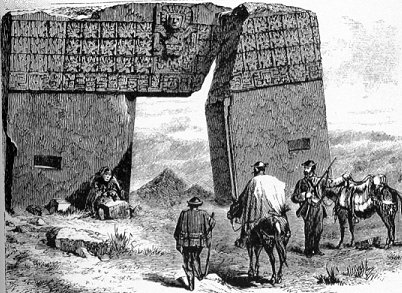 The Gate of the Sun in Tiwanaku, South America After winning 20,000 ℛ︁ℳ︁ in a writing contest, Edmund Kiss traveled to Bolivia in 1928 to study the ruins of temples in the Andes. He claimed that their apparent similarity to ancient European structures indicated that they had been designed by Nordic migrants millions of years earlier.[55] He also claimed that his findings supported the World Ice Theory, which held that the universe originated from a cataclysmic clash between gigantic balls of ice and glowing mass. Arthur Posnansky had been studying a local site called Tiwanaku, which he also believed supported the theory. After contacting Posnansky, Kiss approached Wüst for help planning an expedition to excavate Tiwanaku and a nearby site, Siminake. The team would consist of 20 scientists, who would excavate for a year and also explore Lake Titicaca, and take aerial photographs of ancient Incan roads they believed had Nordic roots. By late August 1939, the expedition was nearly set to embark, but the invasion of Poland caused the expedition to be postponed indefinitely. Iran In 1938, the Ahnenerbe's president, Walther Wüst, proposed a trip to Iran to study the Behistun Inscription, which had been created by order of the Achaemenid Shah Darius I, who had declared himself to have been of Aryan origin in his inscriptions.[32] The inscriptions were recorded atop steep cliffs using scaffolding that was removed after the inscriptions were made. Unable to afford the cost of erecting new scaffolds, Wüst proposed that he, his wife, an amanuensis, an Iranian student (Davud Monshizadeh), a photographer and an experienced mountaineer be sent with a balloon-mounted camera. The onset of the war, however, saw the trip postponed indefinitely. Canary Islands Early travelers to the Canary Islands had described the Guanche natives as having golden-blond hair and white skin, and mummies had been found with blond tresses—facts which Wirth believed indicated that the islands had once been inhabited by Nordics. His colleague Otto Huth proposed an autumn of 1939 expedition to study the ancient islanders’ racial origins, artifacts and religious rites. At the time, the Canary Islands were part of Francisco Franco’s fascist Spanish State (Estado Español). Because Franco refused to side with the Axis when the war started, however, the trip was cancelled. Iceland Bruno Schweizer had already traveled to Iceland three times in 1938 when he proposed an Ahnenerbe expedition with seven others to the country in order to learn about their ancient farming practices and architecture, record folksongs and dances, and also collect soil samples for pollen analysis.[32] The first setback for the expedition was the ridicule of the Scandinavian press, publishing stories in February 1939 claiming the expedition was based on false ideas about Icelandic heritage and sought old church records that did not even exist. An enraged Himmler publicly shut down the trip, but after calming down he allowed the planning of the trip to be secretly continued. The final setback occurred when Himmler's personal staff was unable to get enough Icelandic crowns—Iceland's currency. Not being able to quickly solve this problem, the trip was rescheduled for the summer of 1940.[32] In May 1940, the British invaded neutral Iceland, but when the war had started the expedition had already been shelved. In 1940, following the British occupation of Iceland, the Ahnenerbe-funded Bruno Kress, a German researcher who was in the country at the time, was rounded up along with other German nationals present on the island. Kress was interned in Ramsey on the Isle of Man, but was allowed to correspond with Sievers through letters.[56] Kress's Grammar of Icelandic was eventually published in East Germany in 1955. Kress later worked for the East German Staatssicherheit (Stasi). |
中止された遠征 ボリビア  南米ティワナクの太陽の門 文章コンテストで2万ℛを獲得したエドモンド・キスは、1928年にボリビアを訪れ、アンデス山脈の神殿遺跡を調査した。彼は、古代ヨーロッパの建造物と の明らかな類似性から、それらは数百万年前に北欧からの移民によって設計されたものだと主張した[55]。彼はまた、自分の発見が、宇宙は巨大な氷の玉と 光り輝く塊の激突から生まれたとする世界氷説を支持していると主張した。アーサー・ポスナンスキーはティワナクと呼ばれる現地の遺跡を研究しており、そこ でもこの理論が支持されていると考えていた。 ポスナンスキーと連絡を取ったキスは、ティワナクとその近くのシミナケという遺跡を発掘する探検を計画するため、ヴュストに協力を依頼した。チームは20 人の科学者で構成され、1年間発掘調査を行い、チチカカ湖も探検し、北欧にルーツがあると思われる古代インカの道を航空写真で撮影する予定だった。 1939年8月下旬までに、探検隊の出発はほぼ決定していたが、ポーランド侵攻により探検隊は無期延期となった。 イラン 1938年、アーネンナーベ会長のヴァルター・ヴュストは、ベヒストゥン碑文を研究するためのイラン遠征を提案した。ベヒストゥン碑文は、アケメネス朝の シャー・ダリウス1世の命によって作られたもので、ダリウス1世は自身の碑文にアーリア人の出自を明言していた[32]。新しい足場を組む費用を捻出でき なかったヴュストは、自分、妻、通訳、イラン人留学生(ダヴド・モンシザデ)、写真家、経験豊富な登山家に気球搭載カメラを持たせることを提案した。しか し、戦争が始まったため、旅行は無期限に延期された。 カナリア諸島 カナリア諸島を訪れた初期の旅行者たちは、グアンチェ族の原住民は金色の金髪で白い肌をしていると述べており、金髪の髪をしたミイラも発見されていた。彼 の同僚オットー・フートは1939年秋、古代島民の人種的起源、遺物、宗教儀礼を調査するための探検を提案した。当時、カナリア諸島はフランシスコ・フラ ンコのファシスト・スペイン国家(エスタード・エスパニョール)の一部だった。しかし、フランコは開戦時に枢軸国側につくことを拒否したため、この旅は中 止された。 アイスランド ブルーノ・シュヴァイツァーは、1938年にアイスランドをすでに3回旅行していたが、古代の農法や建築様式を学び、民謡や踊りを記録し、花粉分析のため の土壌サンプルを採取するために、他の7人とともにアイスランドへのアーネンナーベ探検を提案した[32]。 探検隊にとって最初の挫折は、スカンジナビアのマスコミの嘲笑だった。1939年2月、探検隊はアイスランドの遺産に関する誤った考えに基づいており、存 在すらしていない古い教会の記録を求めていると主張する記事が掲載された。激怒したヒムラーは公の場で遠征を中止させたが、落ち着きを取り戻したヒムラー は、遠征計画の密かな継続を許可した。最後の挫折は、ヒムラーの個人的なスタッフがアイスランドの通貨であるアイスランド・クラウンを十分に入手できな かったときに起こった。1940年5月、イギリスは中立国アイスランドに侵攻したが、戦争が始まると遠征はすでに棚上げされていた。 1940年、イギリスのアイスランド占領に伴い、当時アイスランドに滞在していたドイツ人研究者で、アーネンナーベの資金援助を受けていたブルーノ・クレ スは、島に滞在していた他のドイツ国民とともに検挙された。クレスはマン島のラムゼーに収容されたが、手紙を通じてシーヴァースと文通することが許された [56]。クレスの『アイスランド語文法』は最終的に1955年に東ドイツで出版された。クレスはその後、東ドイツのシュタージ (Staatssicherheit)で働いた。 |
| Other Ahnenerbe activities Master Plan East Further information: Generalplan Ost 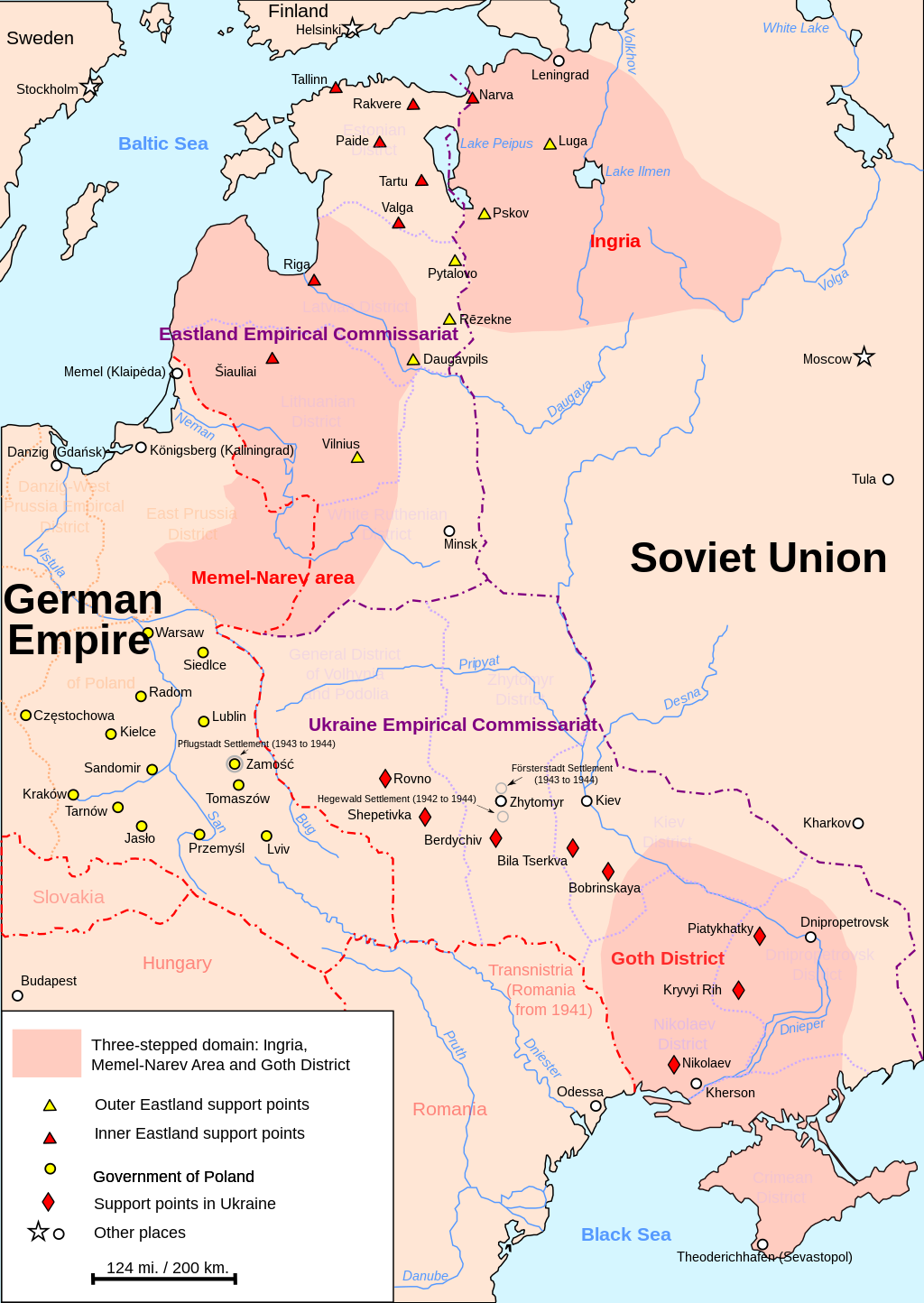 Plan of new German settlement colonies (marked with dots and diamonds), drawn up by the Friedrich Wilhelm University Institute of Agriculture in Berlin, 1942, covering the Baltic states, Poland, Belarus, Ukraine and Crimea After being appointed Commissioner for the Strengthening of the German Race, Himmler set to work with Konrad Meyer on developing a plan for three large German colonies in the eastern occupied territories. Leningrad, northern Poland and the Crimea would be the focal points of these colonies intended to spread the Aryan race. The Crimean colony was called Gotengau, "Goth district", in honor of the Crimean Goths who had settled there and were believed to be Aryan ancestors of the Germans.[32] Himmler estimated that Aryanization of the region would take twenty years, first expelling all the undesirable populations, then re-distributing the territory to appropriate Aryan populations. In addition to changing the demographics of the region, Himmler also intended to plant oak and beech trees to replicate traditional German forests, as well as plant new crops brought back from Tibet. To achieve the latter end, Himmler ordered a new institution set up by the Ahnenerbe and headed by Schäfer. A station was then set up near the Austrian town of Graz where Schäfer set to work with seven other scientists to develop new crops for the Reich. The final piece of the puzzle fell into place after Hitler read a work by Alfred Frauenfeld which suggested resettling inhabitants of South Tyrol, believed by some to be descendants of the Goths, to Crimea. In 1939 the South Tyroleans were ordered by Hitler and Benito Mussolini to vote on whether they wanted to remain in Italy and accept assimilation or emigrate to Germany. Over 80% chose the latter (for details see South Tyrol Option Agreement). Himmler presented the Generalplan Ost, 'Master Plan East' to Hitler and received approval in July 1942. Full implementation of the plan was not feasible because of the war, but a small colony was founded around Himmler's field headquarters at Hegewald,[57] near Kiev. Starting on October 10, 1942, Himmler's troops deported 10,623 Ukrainians from the area in cattle cars before bringing in trains of ethnic Germans (Volksdeutsche) from northern Ukraine.[32] The SS authorities gave families supplies as well as land, but also informed them of quotas of food they would be required to produce for the SS. Failed seizure of Tacitus manuscript The Ahnenerbe had tried to gain possession of the Codex Aesinas, a famous medieval copy of Tacitus' Germania. Although Mussolini had originally promised it as a gift in 1936, it remained in the possession of the Count Aurelio Baldeschi Guglielmi Balleani outside Ancona, from where the Ahnenerbe tried to obtain it after Mussolini was deposed.[58][59] Headquarters relocation On July 29, 1943, the Royal Air Force's firebombing of Hamburg led Himmler to order the immediate evacuation of the main Ahnenerbe headquarters in Berlin. The extensive library was moved to Schloss Oberkirchberg near Ulm while the staff was moved to the tiny village of Waischenfeld near Bayreuth, Bavaria. The building selected was the 17th century Steinhaus. While much of the staff was not ecstatic about the primitive conditions, Sievers seemed to have embraced the isolation.[32] |
その他の活動 マスタープラン・イースト さらに詳しい情報 東方基本計画  1942年、ベルリンのフリードリヒ・ヴィルヘルム大学農業研究所が作成した、バルト三国、ポーランド、ベラルーシ、ウクライナ、クリミアを対象とする新 しいドイツ人入植植民地の計画(点と菱形で表示)。 ドイツ民族強化委員に任命されたヒムラーは、コンラート・マイヤーとともに、東部占領地域に3つの大規模なドイツ植民地を建設する計画の策定に着手した。 レニングラード、ポーランド北部、クリミアは、アーリア人種を広めることを目的としたこれらの植民地の中心地となる。クリミアの植民地は、そこに定住し、 ドイツ人のアーリア人の祖先であると信じられていたクリミアのゴート人にちなんで、「ゴート地区」(Gotengau)と呼ばれた[32]。 ヒムラーは、この地域のアーリア人化には20年かかると見積もっており、まず好ましくない人口をすべて追放し、その後、適切なアーリア人の人口に領土を再 配分した。ヒムラーは地域の人口動態を変えるだけでなく、伝統的なドイツの森林を再現するためにオークやブナの木を植え、チベットから持ち帰った新しい作 物を植えるつもりだった。後者の目的を達成するために、ヒムラーはアーネンナーベが設立し、シェーファーが責任者となる新しい機関を命じた。そしてオース トリアのグラーツ近郊にステーションが設置され、シェーファーは他の7人の科学者とともに帝国のための新しい作物の開発に着手した。 ヒトラーがアルフレッド・フラウエンフェルドの著作を読み、ゴート族の末裔とされる南チロルの住民をクリミアに移住させることを提案したことで、パズルの 最後のピースがはまった。1939年、ヒトラーとベニート・ムッソリーニによって、南チロルの住民はイタリアに残って同化を受け入れるか、ドイツに移住す るかの投票を命じられた。80%以上が後者を選んだ(詳細は南チロル・オプション協定を参照)。ヒムラーは「東方基本計画」(Generalplan Ost)をヒトラーに提示し、1942年7月に承認を得た。 戦争のために計画の完全な実施は不可能であったが、キエフ近郊のヘーゲヴァルト[57]にあるヒムラーの現地司令部の周辺に小規模な植民地が設立された。 1942年10月10日から、ヒムラーの部隊はこの地域から10,623人のウクライナ人を牛車で強制送還し、その後にウクライナ北部から民族ドイツ人 (Volksdeutsche)の列車を連行した[32]。親衛隊当局は家族に土地だけでなく物資も与えたが、親衛隊のために生産することが要求される食 糧の割当量も通知した。 タキトゥス手稿の押収失敗 アーネンナーベは、タキトゥスの『ゲルマニア』の有名な中世の写本であるエーシナス写本を手に入れようとした。1936年にムッソリーニが寄贈を約束した ものの、アンコーナ郊外のアウレリオ・バルデスキ・グリエルミ・バレアニ伯爵が所有したままであり、ムッソリーニが退位した後、アーネンナーベはそこから 入手しようとした[58][59]。 本部の移転 1943年7月29日、イギリス空軍のハンブルク爆撃により、ヒムラーはベルリンのアーネンナーベ本部の即時避難を命じた。広範な図書館はウルム近郊の オーバーキルヒベルク城に移され、職員はバイエルン州バイロイト近郊の小さな村ヴァイシェンフェルトに移された。選ばれた建物は17世紀のシュタインハウ スだった。スタッフの多くは原始的な環境に不満を抱いていたが、シーヴァースは孤立を受け入れたようだった[32]。 |
| Financing Financially, the Ahnenerbe was separate from the Nazi Party treasury and had to find funding from other sources including membership dues and donations. After 1938, it received funds from the Deutsche Forschungsgemeinschaft. In addition, a foundation (Ahnenerbe-Stifterverband) was established, set up with funds from business leaders.[30] One of the largest donations, approximately 50,000 ℛ︁ℳ︁, came from Deutsche Bank boardmember Emil Georg von Stauß associates, including BMW and Daimler-Benz.[32] The foundation also received royalties from patents partially held by the SS (see below). During the war, Ahnenerbe also received money from other SS departments and profited from the Arisierung of Jewish property—its headquarters in Dahlem had been purchased at half its market value. In 1940, another estate in Munich was added.[30] In 1936, the SS formed a joint company with Anton Loibl, a machinist and driving instructor. The SS had heard about reflector pedals for bicycles, that Loibl and others had been developing. Assuring that Loibl got the patent himself, Himmler then used his political weight to ensure the passing of a 1939 law requiring the use of the new reflective pedals—of which the Ahnenerbe received a share of the profits, 77,740 ℛ︁ℳ︁ in 1938.[32] |
資金調達 財政的には、アーネンナーベはナチ党の金庫とは別であったため、会費や寄付金など他の財源から資金を調達しなければならなかった。1938年以降はドイツ 研究連絡会(Deutsche Forschungsgemeinschaft)から資金を得た。さらに、財界のリーダーたちからの資金で設立された財団(Ahnenerbe- Stifterverband)も設立された[30]。最大規模の寄付のひとつである約5万㌆の寄付は、ドイツ銀行の取締役であったエミール・ゲオルク・ フォン・シュタウセス(Emil Georg von Stauß)がBMWやダイムラー・ベンツなどの関連会社から得たものであった[32]。戦時中、アーネンナーベは他のSS部門からも資金を受け取り、ユ ダヤ人財産の売却で利益を得た。1940年には、ミュンヘンにもう一つの地所が加えられた[30]。 1936年、SSは機械工で運転教官のアントン・ロイブルと合弁会社を設立した。親衛隊は、ロイブルらが開発していた自転車用の反射ペダルの話を聞いてい た。ロイブル自身が特許を取得することを保証したヒムラーは、その政治的影響力を利用して、1939年に新しい反射ペダルの使用を義務付ける法律を成立さ せ、アーネンナーベはその利益の一部、1938年には77,740㌫を受け取った[32]。 |
| Medical experiments The Institut für Wehrwissenschaftliche Zweckforschung ("Institute for Military Scientific Research"), which conducted extensive medical experiments using human subjects, became attached to the Ahnenerbe during World War II. It was managed by Wolfram Sievers.[60] Sievers had founded the organization on the orders of Himmler, who appointed him director with two divisions headed by Sigmund Rascher and August Hirt, and funded by the Waffen-SS. Dachau Sigmund Rascher was tasked with helping the Luftwaffe determine what was safe for their pilots—because aircraft were being built to fly higher than ever before. He applied for and received permission from Himmler to requisition camp prisoners to place in vacuum chambers to simulate the high altitude conditions that pilots might face.[32] Rascher was also tasked with discovering how long German airmen would be able to survive if shot down above freezing water. His victims were forced to remain out of doors naked in freezing weather for up to 14 hours, or kept in a tank of icewater for 3 hours, their pulse and internal temperature measured through a series of electrodes. Warming of the victim was then attempted by different methods, most usually and successfully by immersion in very hot water, and also less conventional methods such as placing the subject in bed with women who would try to sexually stimulate him, a method suggested by Himmler.[61][62] Rascher experimented with the effects of Polygal, a substance made from beets and apple pectin, on coagulating blood flow to help with gunshot wounds. Subjects were given a Polygal tablet, and shot through the neck or chest, or their limbs amputated without anaesthesia. Rascher published an article on his experience of using Polygal, without detailing the nature of the human trials, and also set up a company to manufacture the substance, staffed by prisoners.[63] Similar experiments were conducted from July to September 1944, as the Ahnenerbe provided space and materials to doctors at Dachau concentration camp to undertake “seawater experiments”, chiefly through Sievers. Sievers is known to have visited Dachau on July 20, to speak with Ploetner and the non-Ahnenerbe Wilhelm Beiglboeck, who ultimately carried out the experiments. Skulls Walter Greite rose to leadership of the Ahnenerbe's Applied Nature Studies division in January 1939, and began taking detailed measurements of 2,000 Jews at the Vienna emigration office—but scientists were unable to use the data. On December 10, 1941, Bruno Beger met with Sievers and convinced him of the need for 120 Jewish skulls.[64] During the later Nuremberg Trials, Friedrich Hielscher testified that Sievers had initially been repulsed at the idea of expanding the Ahnenerbe to human experimentation, and that he had “no desire whatsoever to participate in these.”[65] Jewish skeleton collection: Beger collaborated with August Hirt, of the Reich University of Strassburg, in creating a Jewish skeleton collection for research. The bodies of 86 Jewish men and women were ultimately collected and macerated. |
医学実験 第二次世界大戦中、人体を使って大規模な医学実験を行ったInstitut für Wehrwissenschaftliche Zweckforschung(「軍事科学研究所」)がアーネンナーベに併設された。ジーヴァースはヒムラーの命令でこの組織を設立し、ジークムント・ ラッシャーとアウグスト・ヒルトが率いる2つの部門とともに所長に任命され、ヴァッフェンSSから資金援助を受けていた[60]。 ダッハウ ジークムント・ラッシャーは、ドイツ空軍がパイロットにとって何が安全かを判断する手助けをする使命を帯びていた。彼は、パイロットが直面する可能性のあ る高高度条件をシミュレートするために、真空チャンバーに収容所の囚人を入れるようヒムラーに申請し、許可を得た[32]。 ラッシャーはまた、ドイツ軍飛行士が氷水上空で撃墜された場合、どのくらい生き延びることができるかを発見する任務も負っていた。彼の犠牲者は、凍てつく ような天候の中、最大14時間裸で戸外に留まったり、氷水のタンクに3時間入れたりさせられ、一連の電極を通して脈拍と体内温度を測定された。その後、犠 牲者の加温はさまざまな方法で試みられ、最も一般的で成功したのは非常に熱い湯に浸す方法であったが、ヒムラーが提案した性的刺激を与えようとする女性と ベッドインさせる方法など、従来とは異なる方法も用いられた[61][62]。 ラッシャーは、ビーツとリンゴのペクチンから作られた物質であるポリガールが、銃創を助けるために血流を凝固させる効果を持つことを実験した。被験者には ポリギャルの錠剤が与えられ、首や胸を撃ち抜かれたり、麻酔なしで手足を切断されたりした。ラッシャーは、人体実験の内容を詳述することなく、ポリガルを 使用した経験についての論文を発表し、囚人スタッフによるポリガル製造会社を設立した[63]。 同様の実験は1944年7月から9月にかけて行われ、アーネンナーベはダッハウ強制収容所の医師たちに、主にシーヴァースを通じて「海水実験」を行うため の場所と材料を提供した。シーヴァースは7月20日にダッハウを訪れ、最終的に実験を実行したプロートナーおよび非アーネンナーベのヴィルヘルム・ベイグ ルボックと話したことが知られている。 頭蓋骨 ヴァルター・グライテは1939年1月、アーネンナーベの応用自然研究部門のリーダーに上り詰め、ウィーンの移民局で2,000人のユダヤ人の詳細な測定 を始めたが、科学者たちはそのデータを利用することができなかった。1941年12月10日、ブルーノ・ベーガーはシーヴァースに会い、120体のユダヤ 人の頭蓋骨の必要性を説得した[64]。後のニュルンベルク裁判で、フリードリッヒ・ヒールシャーは、シーヴァースは当初、アーネンナーベを人体実験に拡 大するというアイデアに反発し、「これらに参加する気はまったくなかった」と証言している[65]。 ユダヤ人の骨格コレクション ベーガーはシュトラスブルク帝国大学のアウグスト・ヒルトと共同で、研究のためのユダヤ人骨格コレクションを作成した。最終的に86人のユダヤ人男女の遺 体が集められ、浸軟された。 |
| Post-World War II Trials 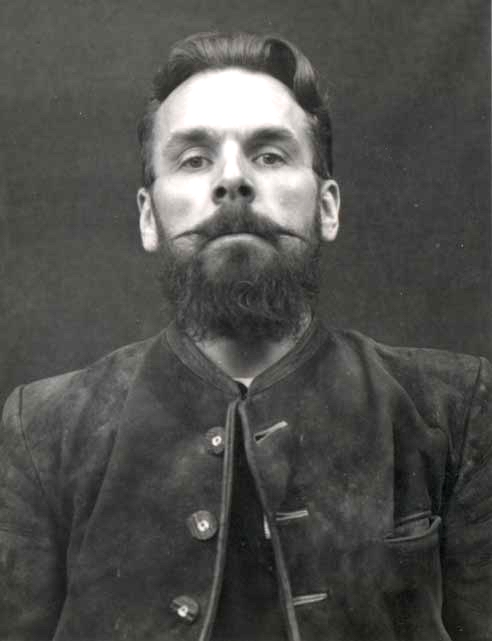 Wolfram Sievers Wolfram Sievers: In Waischenfeld American troops captured a slew of documents that would be used in the case against Sievers which would be a part of the Doctors' Trial. Sievers was charged for aiding in the Jewish skull collection and human medical experiments at Dachau and Natzweiler. In his defense, Sievers claimed he had helped a resistance group since 1929, which was supported by testimony from Friedrich Hielscher on April 15, 1947.[32][page needed] Sievers was nevertheless found guilty on all four counts on August 21, 1947, and sentenced to death. He was hanged on June 2, 1948, at Landsberg Prison. Richard Walther Darré: One of the founders of the Ahnenerbe, Darré was tried in the Ministries Trial. He received seven years imprisonment after being found not guilty on more serious charges. Edmund Kiss: His Bolivia trip having been cancelled, Kiss served in the armed forces the rest of the war, taking command of SS men at Wolfschanze near the end. He was interned in the Darmstadt camp after the war, but was released in June 1947 due to severe diabetes. His de-Nazification classification was as a “major offender”. This allowed him to only take a manual labor job. Following this decision, Kiss hired a lawyer to protest this decision, a major component of his case being he had never been a member of the Nazi Party.[32][page needed] After somewhat renouncing his past, Kiss was reclassified as a Mitläufer in 1948 and fined 501 DM. Walther Wüst: Although the president of the Ahnenerbe from 1937 until the end of the war, Wüst's claims that he was unaware of any medical experiments were acknowledged, and in 1950 he was classified as a Mitläufer and released, returning to the University of Munich as a professor-in-reserve.[32][page needed] Bruno Beger: In February 1948, Beger was classified as "exonerated" by a denazification tribunal unaware of his role in the skeleton collection. In 1960, an investigation into the collection began in Ludwigsburg, and Beger was taken into custody on March 30, 1960. He was released four months later, but the investigation continued until coming to trial on October 27, 1970. Beger claimed that he was unaware the Auschwitz prisoners he measured were to be killed. While two others indicted in the trial were released, Beger was convicted on April 6, 1971, and sentenced to three years in prison for being an accomplice in the murder of 86 Jews. Neither of his colleagues with whom he was tried, Hans Fleischhacker and Wolf-Dietrich Wolff, was convicted.[32][page needed] |
第二次世界大戦後 トライアル  ウォルフラム・シーバース ヴォルフラム・シーヴァース ヴァイシェンフェルトでアメリカ軍は、シーヴァースに対する裁判に使われることになる書類を大量に捕獲した。シーヴァースは、ダッハウとナッツヴァイラー でのユダヤ人の頭蓋骨収集と人体医学実験に協力した罪で起訴された。弁護側では、シーヴァースは1929年からレジスタンスグループを助けていたと主張 し、それは1947年4月15日のフリードリヒ・ヒールシャーの証言によって支持された[32][要出典]。それにもかかわらず、シーヴァースは1947 年8月21日に4つの訴因すべてで有罪となり、死刑を宣告された。彼は1948年6月2日、ランツベルク刑務所で絞首刑となった。 リヒャルト・ワルター・ダレ アーネンナーベ創設者の一人であるダレはミニストリー裁判で裁かれた。より重い罪状で無罪となった後、7年の禁固刑を受けた。 エドマンド・キッス:ボリビアへの旅行がキャンセルされたキッスは、戦争終結間際にヴォルフスシャンツェでSS隊員の指揮を執り、残りの期間軍務に就い た。戦後ダルムシュタット収容所に収容されたが、重度の糖尿病のため1947年6月に釈放された。ナチス解除後の分類は 「大犯罪者 」だった。そのため、肉体労働の仕事にしか就くことができなかった。この決定後、キスはこの決定に抗議するために弁護士を雇ったが、その主な理由は彼がナ チ党員でなかったことであった[32][要出典]。過去をいくらか放棄した後、キスは1948年にミトラウファーに再分類され、501マルクの罰金を科さ れた。 ワルター・ヴュスト 1937年から終戦までアーネンナーベの会長であったが、医学実験を知らなかったというヴュストの主張は認められ、1950年にミトラウファーに分類され て釈放され、予備役教授としてミュンヘン大学に戻った[32][要出典]。 ブルーノ・ベーガー 1948年2月、ベッガーは、骨格標本収集における彼の役割を知らないまま、非azification法廷によって「免責」に分類された。1960年、 ルートヴィヒスブルクでコレクションに関する調査が始まり、ベガーは1960年3月30日に拘束された。彼は4ヵ月後に釈放されたが、捜査は1970年 10月27日の裁判まで続いた。ベガーは、自分が測定したアウシュヴィッツの囚人が殺されるとは知らなかったと主張した。この裁判で起訴された他の2人は 釈放されたが、ベガーは1971年4月6日に有罪判決を受け、86人のユダヤ人殺害の共犯者として禁固3年の判決を受けた。彼と一緒に裁判にかけられた同 僚、ハンス・フライシュハッカーとヴォルフ=ディートリッヒ・ヴォルフはどちらも有罪判決を受けなかった[32][要ページ]。 |
| Legacy Academic study During the 20th century, little scholarly research into the Ahnenerbe took place.[66] Many scholars had likely been dissuaded from exploring the subject because ex-Ahnenerbe members held prominent academic positions in West Germany and did not want younger historians or archaeologists investigating their links with the SS.[66] The main scholar to explore the subject in this period was a Canadian historian, Michael Kater, who conducted his research while in Germany.[66] As the University of Heidelberg sought to publish Kater's thesis on the subject in 1966, Walther Wüst unsuccessfully tried to legally prevent it from doing so.[67] Kater's research was then published in 1974 as Das "Ahnenerbe" der SS 1935–1945.[66] Following German unification in 1990, Achim Leube began an examination of the surviving historical evidence on the Ahnenerbe, much of which had been based in West Germany.[66] In November 1998, Leube oversaw an international academic conference in Berlin on the Nazis' relationship with prehistory.[66] Influence in pseudo-archaeology Many of the ideas inherited or developed by the Ahnenerbe remain influential. Canadian author Heather Pringle has particularly drawn attention to the influence of Edmund Kiss' various "crackpot theories" concerning such matters as the World Ice Theory and the origins of Tiwanaku upon subsequent writers such as H.S. Bellamy, Denis Saurat and, later, Graham Hancock.[68] |
レガシー 学術的研究 20世紀中、アーネンナーベに関する学術的研究はほとんど行われなかった[66]。多くの学者は、元アーネンナーベメンバーが西ドイツで著名な学術的地位 に就いており、若い歴史家や考古学者がSSとの関係を調査することを望まなかったため、このテーマを調査することを控えていたようである[66]。 [ハイデルベルク大学が1966年にこのテーマに関するケーターの論文を出版しようとしたとき、ワルター・ヴュストはそれを法的に阻止しようとして失敗し た[67]。ケーターの研究は1974年に『Das 「Ahnenerbe」 der SS 1935-1945』として出版された[66]。 1990年のドイツ統一後、アヒム・ロイベはアーネンナーベに関する現存する歴史的証拠の検証を開始したが、その多くは西ドイツを拠点としていたもので あった[66]。1998年11月、ロイベはベルリンでナチスと先史学との関係に関する国際学術会議を監督した[66]。 擬古学への影響 アーネンナーベが受け継いだ、あるいは発展させた思想の多くは、今でも影響力を持ち続けている。カナダの作家であるヘザー・プリングルは、エドモンド・キ スの世界氷理論やティワナクの起源などに関する様々な「クラックポット理論」が、H.S.ベラミー、デニス・サウラ、後にはグラハム・ハンコックといった 後続の作家に与えた影響に特に注目している[68]。 |
| In popular culture This section needs additional citations for verification. Please help improve this article by adding citations to reliable sources in this section. Unsourced material may be challenged and removed. (December 2019) (Learn how and when to remove this message) Much misinformation about the Ahnenerbe has circulated, due in part to adaptations of the group in fiction, and historically dubious conspiracy theories that sometimes confuse the Ahnenerbe with the roughly contemporaneous Thule Society, or the historically unverified Vril society. The Ahnenerbe formed the basis for the depiction in the Indiana Jones franchise of Nazis searching for religious artifacts.[69] [70] The antagonist of the 2019 animated film, Lupin III: The First is part of a fictional branch of the Ahnenerbe. Fictional SS Paranormal Division from Return to Castle Wolfenstein video game is based on Ahnenerbe. |
大衆文化の中で このセクションでは、検証のために追加の引用が必要である。このセク ションに信頼できる情報源への引用を追加することで、この記事の改善にご協力いただきたい。ソースのないものは異議申し立てされ、削除される可能性があ る。(2019年12月)(このメッセージを削除する方法とタイミングを学ぶ) アーネンナーベについては、フィクションの中でこのグループが脚色されたり、歴史的に疑わしい陰謀論によって、アーネンナーベをほぼ同時代のトゥーレ協会 や、歴史的に検証されていないヴリール協会と混同されることもあり、多くの誤った情報が出回っている。 アーネンナーベは、『インディ・ジョーンズ』のフランチャイズで、宗教的な遺物を探すナチスの描写の基礎となった[69] [70]。 2019年のアニメ映画『ルパン三世 ザ・ファースト』の敵役は、アーネンナーベの架空の支部の一員である。 ビデオゲーム『Return to Castle Wolfenstein』に登場する架空の親衛隊超常師団はアーネンナーベに基づいている。 |
| Deutsche Physik and Deutsche
Mathematik List of Nazi Party organizations List of Ahnenerbe institutes Nazi mysticism Reich Research Council Thule Society Kokugaku, a similar, if earlier, project to recapture legendary heritage in Japan |
ドイツ物理学とドイツ数学 ナチ党組織一覧 アーネンナーベ研究所のリスト ナチ神秘主義 帝国研究会議 テューレ協会 國學、日本における伝説的遺産を奪還するための類似の、しかしそれ以前のプロジェクト |
| https://en.wikipedia.org/wiki/Ahnenerbe |
◎フェルキッシュ革命(思想全 体)(より詳しくは→「ドイツ・イデオロ ギーの危機:第三帝国の知識的起源」へ)
『フェルキッシュ革命 The crisis of German ideology : intellectual origins of the Third Reich』Mosse, George L. (George Lachmann)の著作。書肆の説明によると「ドイツ・ロマン主義の『民族』の発見から神秘主義、青年運動、人種主義を経て、ナチズムに至るドイツ思想 史の水面下を流れるフェルキッシュ・イデオロギーの系譜」とある。章立ては以下の通りである。
第1部 イデオロギー的基礎(ロマン主義から民族 へ;ゲルマン的信仰;新しいロマン主義;再発見された古代ゲルマン人;人種主義;ゲルマン的ユートピア;ユダヤ人)
第2部 フェルキッシュ・イデオロギーの制度化—1873年‐1918年(教育の来援;青年運動;大学生と教授たちの進撃;リーダーシップ、ブント、エロ ス;諸組織の進展)
第3部 民族社会主義へ—1918年‐1933年(魅了された保守派;在郷軍人と労働者;ブルジョア青年から反ブルジョア青年へ;ドイツ的革命;反ユダヤ
革命)
◎アリオゾフィー
(Ariosophy).:
アルマニズムとアリオゾフィーは、1890年から
1930年にかけて、ギド・フォン・リストとイェルク・ランツ・フォン・リーベンフェルスによってそれぞれオーストリアで開拓された秘教思想体系である。
アーリア人の知恵を意味する「アリオゾフィー」という言葉は、1915年にランツ・フォン・リーベンフェルスによって初めて作られ、1920年代には彼の
教義名となった。以下は、ウィキペディアのAriosophy(英語)項目からの引用と翻訳である。
◎前史
【汎ゲルマン主義】Pangermanismus, Pan-Germanism
19世紀末よりドイツ人の間に生じた民族的な優越と 膨脹を主張するイデオロギーで[2]、ゲルマン民族の団結と世界の制覇達成を主張する思想・運動である[1]。
ドイツ皇帝ヴィルヘルム2世はこのスローガンを掲げ バルカン地方へ進出し、汎スラヴ主義(Pan-Slavism) と対立し、南下政策を続けるロシアとの軋轢を招いた。後にバルカン半島をヨーロッパの火薬庫と呼ばれるまでに民族の対立を激しくした要因の1つである。こ の結果、列強間による帝国主義化、軍備拡大は避けられず、第一次世界大戦を引き起こすこととなった。これは、ドイツ統一を牽引し、周辺諸国との勢力均衡を 望んでいた帝国宰相ビスマルクの理念からはかけ離れたものとなった。
汎ゲルマン主義は、19世紀中葉に行われた「ドイツ統一」の理念の拡大であっ
た。ドイツ人の民族主義の昂揚によって、「ドイツ語響く所がドイツである」とまで言われた。この汎ゲルマン主義(パ
ン=ゲルマン主義)に協調したのは、オーストリア皇帝フランツ・ヨーゼフ1世とスウェーデン国王オスカル2世であった。オスカル2世は、当時ノルウェーを
同君連合とし、デンマークを含めた「プロイセン・スカンディナヴィア・バルト中立連合」なるものを構想していたが、デンマークや自国政府の反対により頓挫
し、ゲルマン主義から離れてしまった。要するにオスカル2世は、北方ノルマン人もドイツ人と同じ民族であると考えていたが、すでに中立主義が根付きつつ
あった北欧諸国には受け入れられなかったのである。一方オーストリア皇帝フランツ・ヨーゼフ1世は、オスカル2世の様な連合構想こそもたなかったが、ドイ
ツ帝国との連携を重視し、バルカン半島への関与を深める為にドイツの武力を利用したと言える。さらに二重帝国内においては、支配民族ドイツ人を遥かに上回
る数のスラヴ系住民を抱え、彼らの汎スラヴ主義への傾倒に苦慮していたという事情もあった。結局、フランツ・ヨーゼフ1世は、ハプスブルク帝国の死守とバ
ルカン問題の狭間で身動きが取れず、ドイツ帝国と共に第一次世界大戦に引きずり込まれ、ハプスブルク帝国の終焉と言う結末を迎えてしまうのである。
◎歴史
1935年リヒャルト・ヴァルター・ダレの構想にヒムラーが相乗りして生まれた。しかし、 ヒムラーは、2年後の1937年にアーネンエアベを親衛隊(SS)に統合したが、強制収容所の行政部門と同一の所轄にしたために、奇妙な連携関係ができ た。他方SSは、ヒムラーの影響力が増すにつれて肥大化をとげて、実質的に上からのコントロールがきかない組織になった。アーネンエアベにおける事務局長 (Reichsgeschäftsführer)ヴォルフラム・ジーヴァスは、 自分の業績をあげるために、人体実験や(収容者からの殺害を前提にする)人骨収集などの異様な肥大化をとげる。
リヒャルト・ヴァルター・オスカール・ダレ
(Richard Walther Oskar Darré、1895年7月14日 -
1953年9月5日)は、ドイツ国の政治家。国家社会主義ドイツ労働者党農政全国指導者。ヒトラー内閣では食糧農業大臣(Reichsministerium
für Ernährung und Landwirtschaft)を(30. Juni 1933〜23. Mai
1942)務め、「血と土」イデオロギーを推進した。最終階級は親衛隊大将位の親衛隊名誉指導者。
◎「血と土」 のイデオロギー(ウィキペディアに記事による)
Blut und Boden は、民族の血と祖国の土に訴える国家イデオロギー。「ナチス・ドイツの台頭と同時期に、リヒャルト・ヴァルター・ダレ(Richard Walther Oskar Darré, 1895-1953)がこの用語を普及させた。ダレの最初 の著書「Das Bauerntum als Lebensquell der nordischen Rasse(北方人種の生命の源としての農民階級)」は1928年に書かれた。彼は森の保護を大いに強調してより自然な土地管理の方法を主唱し、家畜を飼 育するに際しては、もっと開放的な空間と空気が必要だと主張した。こうした主張を聞いて感銘を受けた人々の一人がハインリヒ・ヒムラーだった。ヒムラー自 身も「アルタマネン(Artaman League; Artamanen)」のメンバーである。1930 年、彼は「血と土を基礎とした新しい貴族」(Neuadel aus Blut und Boden)と呼ばれる本を書いて、体系的な優生学政策を提案し、国家をむしばんでいる全ての問題への万能薬として、血統を論じた。1933 年のライヒ世 襲農地法(Reichserbhofgesetz)は「血と土」の思想を採用 し、その目的を以下のように記している。「農耕共同体を、ドイツ民衆の血の源として 保全する」(Das Bauerntum als Blutquelle des deutschen Volkes erhalten)。選定された土地が、父から年長の子に継承された土地と宣言されて、抵当に入れたり譲渡する事はできず、ナチスが他の農民と差別化する ためにそこの農民のみが「農場の農民」(Bauen)と呼ばれた[5]。農村は歩兵の供給元であり、産業都市の「民族のカオス」とは異なりドイツ国民共同 体(Volksgemeinschaft) ともみなされていた[6; Robert Cecil, The Myth of the Master Race: Alfred Rosenberg and Nazi Ideology p166]。カール・シュミットは、抽象的な全世界の中で民族への忠誠心が真に求められるために、民衆は彼らの「血と土」に対して適切に法を開発すべき、 と主張した[7; Claudia Koonz, The Nazi Conscience, p 60]。1943年に日本の厚生省が作成した「大和民族を中核とする世界政策の検 討」は、ナチスの国家社会主義の用語や概念からの引用や影響が多数見られ る[8]:John W. Dower, War Without Mercy: Race & Power in the Pacific War p265。」
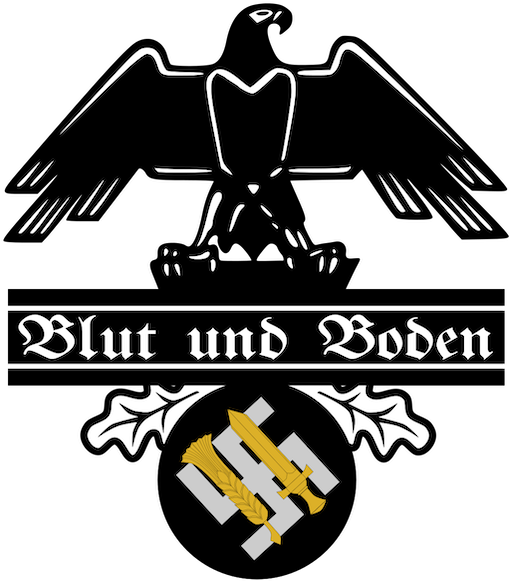
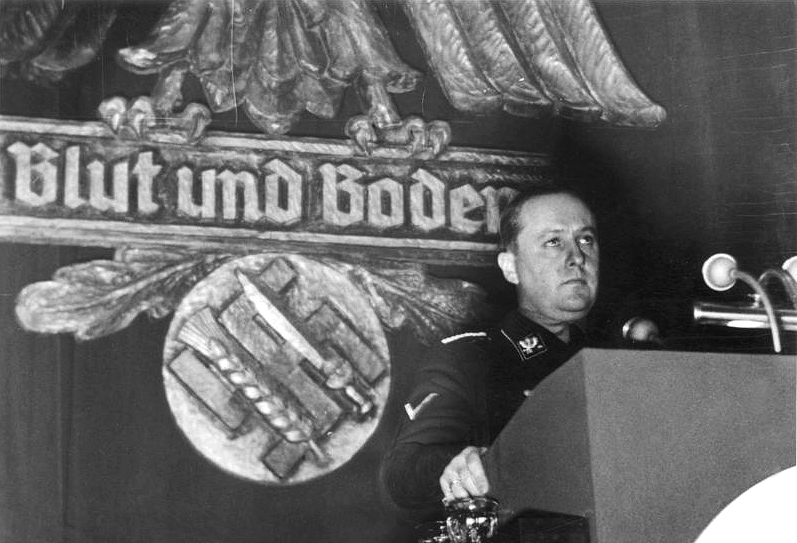
「血と土」のシンボルマークと、1937年にゴス ラーで「血と土」というスローガンの下で全国農業生産者団で講演したヴァルター・ダ レ:出典は、Bundesarchiv、Bild 183-H1215-503-009 / CC-BY-SA 3.0.
◎「アルタマネン(Artaman League; Artamanen)」に歴史的に先行するレーベンスフォルム(生活改善運動, Lebensreform)
Lebensreform (「生活改革」)は、 19世紀半ばから始まり、特にドイツ帝国とその後スイスで始まった、さまざまな社会改革運動のドイツ語の総称のこと。共通の特徴は、工業化、唯物論、都市 化への批判と自然状態への努力の組み合わせであった。画家で社会改革者のカール・ヴィルヘルム・ディーフェンバッハは、レーベンス改革の重要な先駆者であ ると考えられている。さまざまな運動には包括的な組織はなかったが、多くの協会があった。レーベンス改革の改革運動を現代的なものとして分類すべきか、反 現代的で反動的なものとして分類すべきかについては議論の余地があり、今日まで議論が続いている。
アルタマネン・リーグは、19世紀後半から20世紀 初頭のドイツにおけるレーベンス改革運動全体にそのルーツを持っていた。この運動には、生態学、健康、フィットネス、菜食主義、およびヌーディズムに関連 するさまざまな実験に関与したドイツ全土の何百ものグループが含まれていた(Nacktkultur)。これらのグループは、右派から左派までさまざまな 政治的広がりがあった。極右グループは、最終的にナチ党のメンバーとその支持者の間で支持を得た。数万人に上った右翼のレーベンス改革派による出版物は、 彼らの慣行は、血と土が強調され「ドイツ人種が自らを再生し、最終的にはその隣人や国の中に腐敗剤を注入することを意図した悪魔のようなユダヤ人に勝つ手 段である」と主張した。」。[2]
◎1938
年から1939年のナチスドイツによるチベット探検
■アーネンエルベ(アーネンエアベ)が組織した探検 隊(未着手を含む)
| 3 Expeditions 3.1 Karelia 3.2 Bohuslän 3.3 Italy 3.4 Central Eurasia 3.5 New Swabia(Neuschwabenland, 南極) 3.6 Germany 3.6.1 Hedeby 3.6.2 Baden-Württemberg 3.6.3 Mauern 3.7 France 3.7.1 Bayeux Tapestry 3.8 Tibet 3.9 Poland 3.10 Crimea b3.11 Ukraine 4 Cancelled expeditions 4.1 Bolivia 4.2 Iran 4.3 Canary Islands 4.4 Iceland 5 Other Ahnenerbe activities 5.1 Master Plan East 5.2 Failed seizure of Tacitus manuscript 5.3 Headquarters relocation |
■アーネンエルベ(アーネンエアベ)が関与した人体 実験や人体標本採取 のための殺害
| Medical
experiment at Ahnenerbe.(7.1
Dachau; 7.2
Skulls) |
|
| The
Institut für Wehrwissenschaftliche Zweckforschung ("Institute for
Military Scientific Research"), which conducted extensive medical
experiments using human subjects, became attached to the Ahnenerbe
during World War II. It was managed by Wolfram Sievers.[57] Sievers had
founded the organization on the orders of Himmler, who appointed him
director with two divisions headed by Sigmund Rascher and August Hirt,
and funded by the Waffen-SS. |
|
| Dachau Sigmund Rascher was tasked with helping the Luftwaffe determine what was safe for their pilots—because aircraft were being built to fly higher than ever before. He applied for and received permission from Himmler to requisition camp prisoners to place in vacuum chambers to simulate the high altitude conditions that pilots might face.[33] Rascher was also tasked with discovering how long German airmen would be able to survive if shot down above freezing water. His victims were forced to remain out of doors naked in freezing weather for up to 14 hours, or kept in a tank of icewater for 3 hours, their pulse and internal temperature measured through a series of electrodes. Warming of the victim was then attempted by different methods, most usually and successfully by immersion in very hot water, and also less conventional methods such as placing the subject in bed with women who would try to sexually stimulate him, a method suggested by Himmler.[58][59] Rascher also experimented with the effects of Polygal, a substance made from beets and apple pectin, on coagulating blood flow to help with gunshot wounds. Subjects were given a Polygal tablet, and shot through the neck or chest, or their limbs amputated without anaesthesia. Rascher published an article on his experience of using Polygal, without detailing the nature of the human trials, and also set up a company to manufacture the substance, staffed by prisoners.[60] Similar experiments were conducted from July to September 1944, as the Ahnenerbe provided space and materials to doctors at Dachau to undertake “seawater experiments”, chiefly through Sievers. Sievers is known to have visited Dachau on July 20, to speak with Ploetner and the non-Ahnenerbe Wilhelm Beiglboeck, who ultimately carried out the experiments. |
ダッハウでの人体実験 |
| Skulls Walter Greite (1907-1984) rose to leadership of the Ahnenerbe's Applied Nature Studies division in January 1939, and began taking detailed measurements of 2,000 Jews at the Vienna emigration office—but scientists were unable to use the data. On December 10, 1941, Beger met with Sievers and convinced him of the need for 120 Jewish skulls.[61] During the later Nuremberg Trials, Friedrich Hielscher testified that Sievers had initially been repulsed at the idea of expanding the Ahnenerbe to human experimentation, and that he had “no desire whatsoever to participate in these.”[62] Jewish skeleton collection: Beger collaborated with August Hirt, of the Reich University of Strassburg, in creating a Jewish skeleton collection for research. The bodies of 86 Jewish men and women were ultimately collected and macerated. |
頭骨収集 |
The
cadaver of Berlin dairy merchant Menachem Taffel. Deported to Auschwitz
in March 1943 along with his wife and child who were gassed upon
arrival. He was chosen to be an anatomical specimen in the Jewish
skeleton collection, shipped to Natzweiler-Struthof and killed in the
gas chamber in August 1943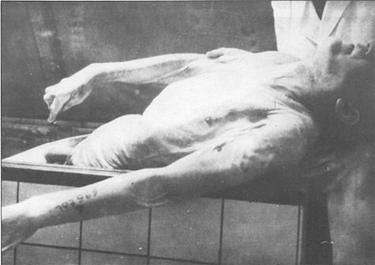 |
|
 ヴォルフラム・ジーヴァス(Wolfram Sievers, 1905-1948.)親衛隊大佐,
アーネンエルベ事務長。3審とも有罪(1947年8月20日)死刑。「ストラスブールライヒ大学のアウグスト・ヒルト(August Hirt,
1898-1945)の人種研究のために人骨を集めることに助力した。彼は人骨を集めるためだけに112人のユダヤ人囚人を選び出して殺害。1948年6
月2日にバイエルン州のランツベルク刑務所において絞首刑」ジーヴァス) ヴォルフラム・ジーヴァス(Wolfram Sievers, 1905-1948.)親衛隊大佐,
アーネンエルベ事務長。3審とも有罪(1947年8月20日)死刑。「ストラスブールライヒ大学のアウグスト・ヒルト(August Hirt,
1898-1945)の人種研究のために人骨を集めることに助力した。彼は人骨を集めるためだけに112人のユダヤ人囚人を選び出して殺害。1948年6
月2日にバイエルン州のランツベルク刑務所において絞首刑」ジーヴァス)- アウグスト・ヒルトとの共同研究者。 - ヨーゼフ・クラーマー(ベルゲン・ベルゼン強制収容所所長)より犠牲者 の提供をうける |
|
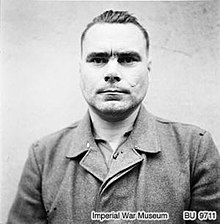 ヨーゼフ・クラーマー(Josef Kramer, 1907-1945) ヨーゼフ・クラーマー(Josef Kramer, 1907-1945) |
|
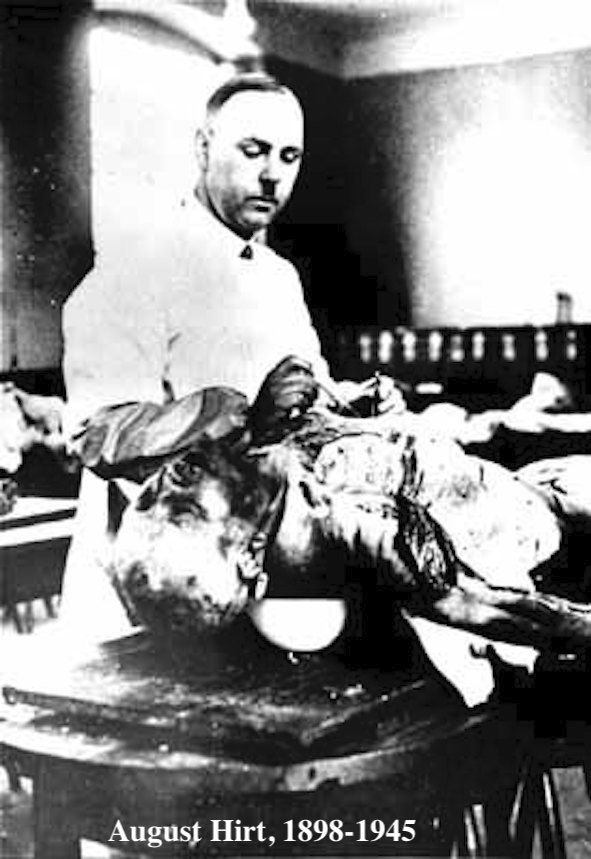 ア ウグスト・ヒルト(August Hirt, 1898-1945)スイス=ドイツの解剖学者「第二次世界大
戦中にはシュトラスブルクライ ヒ大学(de:Reichsuniversität
Straßburg)の長官を務めていた。アーネンエルベのヴォルフラム・ジーヴァスとともに人種研究のためにダッハウ強制収容所の囚人たちを殺害して人
間の頭蓋骨を集めていた。1943年にはアウシュヴィッツ強制収容所の受刑者のうち79 [→86
名]人のユダヤ人男性、30人のユダヤ人女性、2人のポーランド人、4人の
アジア人を確保し、ナッツヴァイラー強制収容所(Natzweiler-Struthof)
へ送還し、ヨゼフ・クラマーにガス殺させたのち、その遺体を使って人体実験を行った。アジア人はソ連兵捕虜から確保したと思われ、彼らはメスカリンの毒と
しての影響を調べるた めの人体実験にも使用された。シュヴァルツヴァルトで自殺(1945年6月2日)」ア ウグスト・ヒルト) ア ウグスト・ヒルト(August Hirt, 1898-1945)スイス=ドイツの解剖学者「第二次世界大
戦中にはシュトラスブルクライ ヒ大学(de:Reichsuniversität
Straßburg)の長官を務めていた。アーネンエルベのヴォルフラム・ジーヴァスとともに人種研究のためにダッハウ強制収容所の囚人たちを殺害して人
間の頭蓋骨を集めていた。1943年にはアウシュヴィッツ強制収容所の受刑者のうち79 [→86
名]人のユダヤ人男性、30人のユダヤ人女性、2人のポーランド人、4人の
アジア人を確保し、ナッツヴァイラー強制収容所(Natzweiler-Struthof)
へ送還し、ヨゼフ・クラマーにガス殺させたのち、その遺体を使って人体実験を行った。アジア人はソ連兵捕虜から確保したと思われ、彼らはメスカリンの毒と
しての影響を調べるた めの人体実験にも使用された。シュヴァルツヴァルトで自殺(1945年6月2日)」ア ウグスト・ヒルト)- 86 名のユダヤ人犠牲者の氏名(The Denying History Project) |
|
| Water Greite,
"Er vertrat vehement die nationalsozialistischen (rassepolitischen und
vulgärdarwinistischen) Ansichten in der Biologie und sorgte in
prominenten Funktionen mit an der "Gleichschaltung" der deutschen
Biologen. Schon in Göttingen war er der SS beigetreten. 1932 trat er in
die NSDAP ein.[4] 1935 war er Dozent für Rassenkunde an der Hochschule
für Lehrerfortbildung in Frankfurt an der Oder. 1937 wechselte er als
Regierungsrat (später Oberregierungsrat) in die Erbbiologische
Abteilung des Reichsgesundheitsamts. 1939 übernahm er die
Schriftleitung der Monatsschrift des Reichsbundes für Biologie (ehemals
Der Biologe), nachdem der Nationalsozialist Ernst Lehmann entmachtet
worden war. Er war auch Bundesleiter des Reichsbundes für Biologie und
SS-Obersturmbannführer.[5] Beim Ahnenerbe sorgte er unter anderem für
"rassische" Begutachtung von Umsiedlern in den Ostgebieten. Ab 1940 war
er im Stiftungsrat der Deutschen Forschungsanstalt für Psychiatrie der
Kaiser-Wilhelm-Gesellschaft.
Als Leiter der Abteilung Biologie im Ahnenerbe wurde er aber schon bis
Frühjahr 1942 abgelöst bzw. abgeschoben da er es nach Ansicht seiner
Kollegen beim Ahnenerbe an menschlichen Qualitäten fehlen ließ.[6]" |
|
●ナチスドイツの民族=人種(Volk)概念を知るための用語集
| チュートン(Teutons,
Teutones) |
テ
ウトネス族(ラ
テン語: Teutones)は、古代ヨーロッパに存在した部族の名称である。テュートン族(英語:
Teutons)とも呼ばれる。古代ギリシアおよび古代ローマの2人の地理学者であるストラボンやウェッレイウス・パテルクルスはテウトネス族がキンブリ
族と近い関係にあったとし、民族的にはゲルマニア系またはガリア系であったとしている。
クラウディオス・プトレマイオスの地図によると、テウトネス族はユトランド半島が原住地とあり、ポンポニウス・メラ(英語版)はスカンディナヴィアに居住
していたとする。いずれにせよ、現在のデンマーク北部がテウトネス族の領域であったことで一致している。
紀元前113年頃からテウトネス族はキンブリ族と共に大挙して、ダヌビウス川(ドナウ川)の谷を南と西側より渡った。テウトネス族らはやがて、ローマの領
域へと侵入、ガリアを通過して、イタリア本土を攻撃するに至った。テウトネス族は幾つかの戦闘で勝利を収めた(アラウシオの戦いなど)が、紀元前102年
にローマの執政官ガイウス・マリウスが率いるローマ軍とのアクアエ・セクスティアエの戦いで大敗を喫し、テウトネス族の王テウトボド(英語版)はローマへ
と連行された。
中世以降、テュートン(チュートン)はゲルマニア系の源流の一つと見なされ、チュートン騎士団(ドイツ騎士団)の名などのように、ゲルマン系民族・ドイツ
人の別称として使われた。 |
リンク
文献
その他の情報
Copyleft, CC, Mitzub'ixi Quq Chi'j, 1996-2099
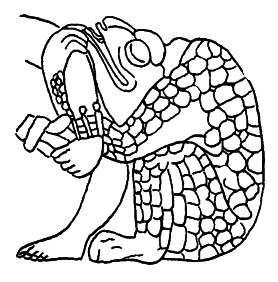
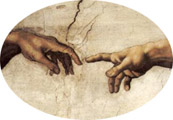
++
Copyleft,
CC, Mitzub'ixi Quq Chi'j, 1996-2099